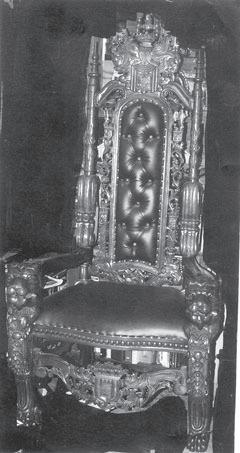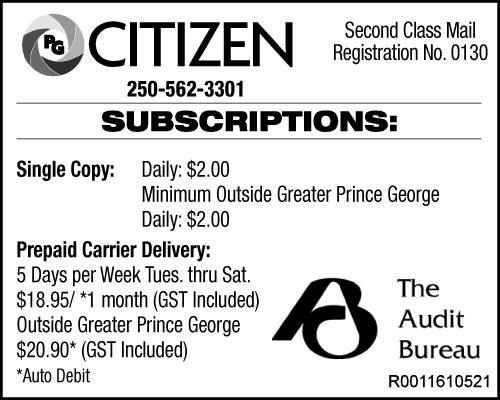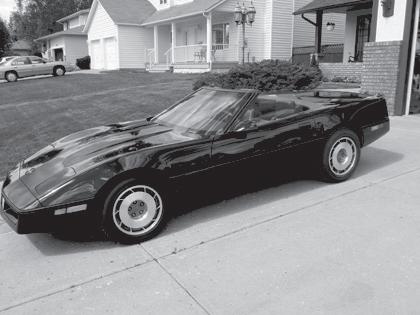Climate change costs rising: U.S. gov’t report

Trimming the tree
David White with the City of


David White with the City of
Citizen staff
Victor Frank Bowman, who was born on Oct. 16, 1939 died at the Prince George Rotary Hospice House on Nov. 13.
Bowman was born in Prince George and grew up in Vanderhoof.
Bowman had a strong sense of community and volunteered with service clubs and other associations, including the Kinsmen Club in Nanaimo, Terrace and Prince George.
As a longtime member of the Prince George Rotary Club, he took on several roles including president and past president. In addition, he was a member of the Prince George Chamber of Commerce, past chair and board member of the Prince George Construction Association, a board member of the Northern BC Construction Association and director of the BC Construction Association.
Bowman was on the board of directors for BC Rail and a director for the BC Seniors Lottery Foundation for several years and was a public member of the College of Dental Surgeons of BC.
Bowman is survived by sons Kevin (April), Ward (Diana) and Bryan (Janice), nephew Chris (Darlene), who was like another son to him, sister Marion Perison, mother-inlaw Mary Westlake, brothers-in-law Ray Westlake (Lois), Doug Westlake (Jetta), grandchildren Jessica (Rob), Nickolas (Aisha), Oliver, Hamish, Ewan, Norah and Jordys, great grandchildren Tiani, Mckinley and Paisley, many nieces, nephews, cousins

BOWMAN
and close friends.
Bowman was predeceased by his wife Lenore, parents Bill and Mabel, brother, Andy, and father-in-law, Ralph Westlake. By request there will be no funeral.
There is a celebration of life at the Prince George Golf and Curling Club on Nov. 30 from 1 to 3 p.m.
Special thanks goes to the Northern Health Home Support team and to the staff at Hospice House, Dr. Know, Butow and Boucher for their care and kindness.
Donations welcome to the Rotary Hospice House in lieu of flowers.



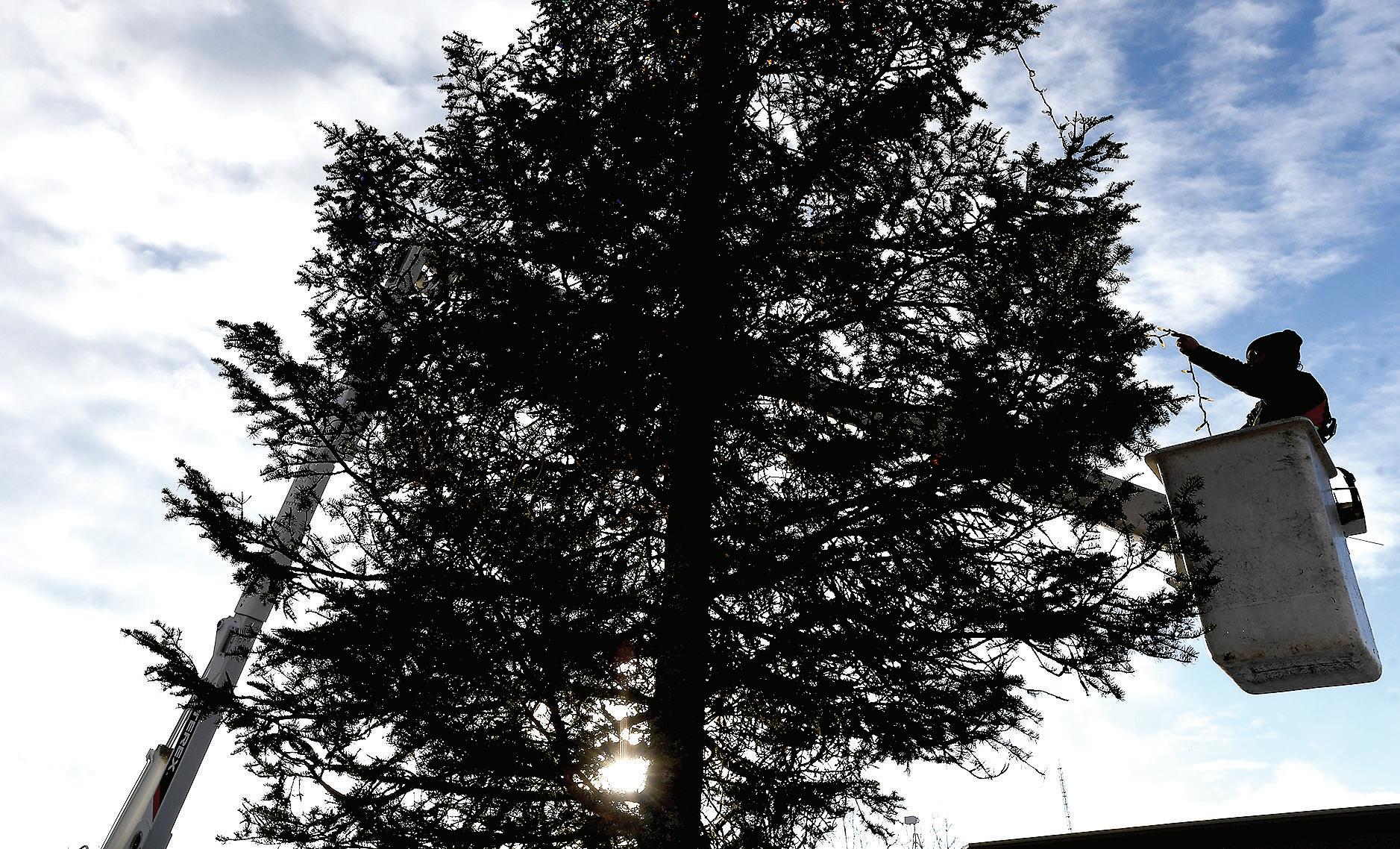
Mark NIELSEN Citizen staff mnielsen@pgcitizen.ca
Prince George has not been forgotten in the rush to sell legalized pot.
The provincial government is currently reviewing eight applications to open cannabis shops in Prince George, city spokesman Mike Kellett said this week.
Those that meet standards as determined by the Liquor and Cannabis Regulation Branch will be passed on to city council, which will consider whether or not to rezone their proposed locations for the use.
The process includes a formal public hearing.
Kellett said it is not known where those applications are in the process and the LCRB declined to say.
There is no typical length of time for an application to be processed, the LCRB said and added the speed depends on several factors, including the applicant’s readiness and the application’s complexity.
So far Kamloops is leading the derby at five outlets.
The city’s council approved two more government cannabis stores this week.
The city became the first in the province to have a B.C. Cannabis Store, when
The provincial government is currently reviewing eight applications to open cannabis shops in Prince George, city spokesman Mike Kellett said this week. Those that meet standards as determined by the Liquor and Cannabis Regulation Branch will be passed on to city council...
it opened on Oct. 17, the day Canada legalized recreational cannabis. Kamloops council has also approved two applications for private stores.
A private store in Kimberley received its provincial licence Nov. 1, after operating for several years as a medical dispensary with support from its local council.
In all, B.C. has at least eight stores now operating or in the final stages of licensing.
— with files from Nick Eagland, Vancouver Sun


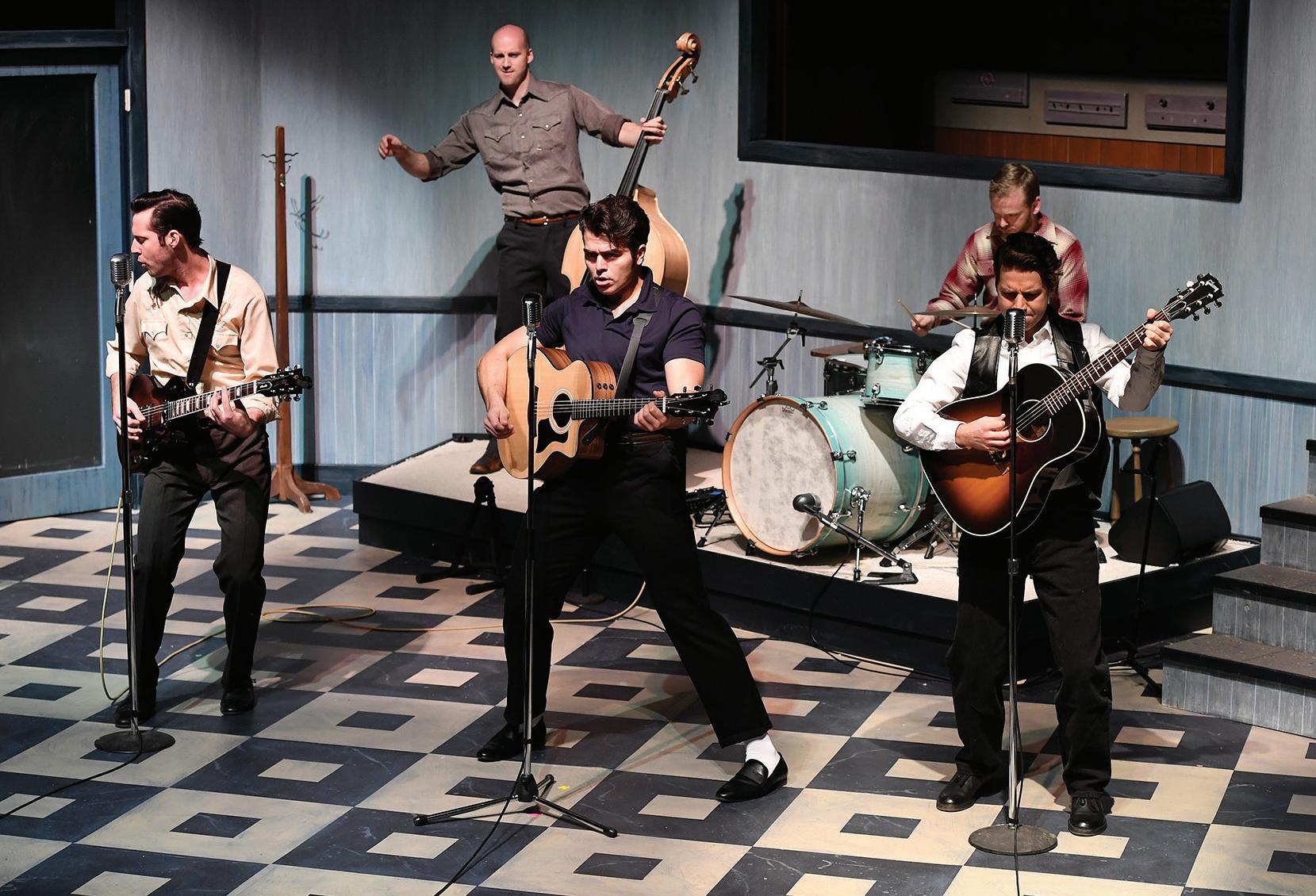
CITIZEN PHOTO BY BRENT BRAATEN
Edward Murphy, Frankie Cottrell, Kenton Klassen, bassist Curtis Abriel and drummer Daniel Bell rehearse a scene from Theatre Northwest’s production of Million Dollar Quartet.
Mark NIELSEN Citizen staff mnielsen@pgcitizen.ca
There’s whole lotta shakin’ is going on at Theatre Northwest.
That’s where Million Dollar Quartet, based on the true story about the convergence of four popular music legends for what has been regarded as a seminal moment in rock and roll, started its run on Thursday night.
On December 4, 1956, none other than Elvis Presley, Jerry Lee Lewis, Carl Perkins and Johnny Cash somehow simultaneously materialized at Sun Record Studios in Memphis, Tenn. The get-together seemed to happen by pure chance – their only common thread being that they either were or, in the case of Presley, had been under contract to impresario Sam Phillips.
What followed was an impromptu jam session, immortalized when the Memphis Press-Scimitar (what a great name) ran a story the next day under the headline “Million Dollar Quartet.” Frankie Cottrell, Montgomery Bjornson, Edward Murphy and Kenton Klassen take on the daunting tasks of playing Presley, Lewis, Perkins and Cash respectively. It means not only portraying a foursome of well-known characters but playing their songs.
In other words, the question for me was not so much whether they have acting chops but had their chords down. They answered that one right out of the gate with a rousing rendition of Blue Suede Shoes.
The tone was set, and over the next two
hours, a further 23 rollicking, rambunctious tunes were belted out, interspersed with soliloquies from Phillips, as played by David Sklar, and exchanges of barbs, jibes and jokes between all who were on the stage.
The drama, such as it is, largely revolves around whether Phillips should follow Presley, who had moved on to RCA, or stay at Sun and continue to give up-and-coming talent their chance to shine.
Side plots include some friction between a fading Perkins and the suddenly iconic Presley over the latter’s choice of recording Blue Suede Shoes. It was Perkins who first wrote and performed the song but it became synonymous with Presley, much to the former’s chagrin.
Added to that is the friction between Lewis and just about everybody. Impetuous and over-the-top, Lewis was immensely talented, matched only by his ability to annoy it seems.
With a goofy smile and wild hair Bjornson plays the role to strong comedic effect, coming across as the kid at the back of the class as he fidgets behind his piano off to the side of the stage.
According to the historians, Presley pretty much led the jam session (they actually sang gospel songs, not timeless hits on that day) but in the stage version, Perkins, as played by Murphy, is the front man.
Frustrated and bitter over an inability to produce another hit, his character spends much of his time lashing out. Murphy brings it home when he takes to his guitar and mic and shows just how talented Perkins was – a testimony to both of their abilities.
Arguably, as Presley and Cash, Cottrell and Klassen are taking on the toughest tasks of channeling two household names. They both ably to take on the looks and personalities but sensibly avoid outright mimicry, relying largely on their own abilities behind the mic to do justice to their songs.
A nice addition is Ferris Vasko, who plays Presley’s girlfriend. Well-coifed in a high-end ’50’s hairdo with a dress to match, she gives a gentle break from the testosterone and is arguably the best singer of the bunch.
As Phillips, Sklar plays a hard-driving businessman who also happens to have a passion for nurturing musical talent. “I just want my boys to be happy,” he says at one point, a frown effectively tattooed on his face.
The set, a recording studio obviously, is testimony to the era of oversized microphones, muted colours, tape-to-tape recording systems and discretely-placed whiskey flasks. As the backup musicians, Curtis Abriel ably plays an eye-catching standup bass and Daniel Bell gets his moment to shine with a brief drum solo near the end of the show.
There were glitches on opening night. Lines were stumbled over a couple times and leadenly delivered on a few other occasions.
And at one point the bells and whistles seemed to drown out the singing although that appeared to be remedied later on – or maybe my ears finally adjusted. But those are just minor criticisms.
Overall, Million Dollar Quartet is an energetic tribute to an era and its music. It is well worth seeing – and hearing.
City issued $15.7M in building permits in October
Citizen staff Permits for $15.7 million worth of construction were taken out in October, according to a city staff report.
The number is well above the $11.8 million reached over the same month last year and $5.2 million generated in October 2016 and raises the year-to-date total to $172.7 million.
The previous record for a year of $147.9 million, set in 2007, was eclipsed in September.
New home construction continued to lead the way. Thirteen permits for $7.7 million were taken out as was one for five units of multiple family worth $1.6 million.
Other major permits include:
• Renovations to a building at 3167 Massey Drive in Pine Centre Mall, worth $1.5 million.
• Construction of a new building at the River Point Landing shopping centre, 3040 Recplace Dr., worth $1.1 million.
• An addition to a building at Omineca Fabricating, 287 Ongman Rd., worth $850,000.
• Addition of two gas pumps to the Federated Co-operatives gas bar at 5520 Hartway Dr., wroth $467,100.
• Construction of a new building at Lobol Enterprises Ltd., 8465 Kelly Rd. North, $165,600.

Todd Whitcombe explains the science behind every day life in Relativity, every Thursday only in The Citizen

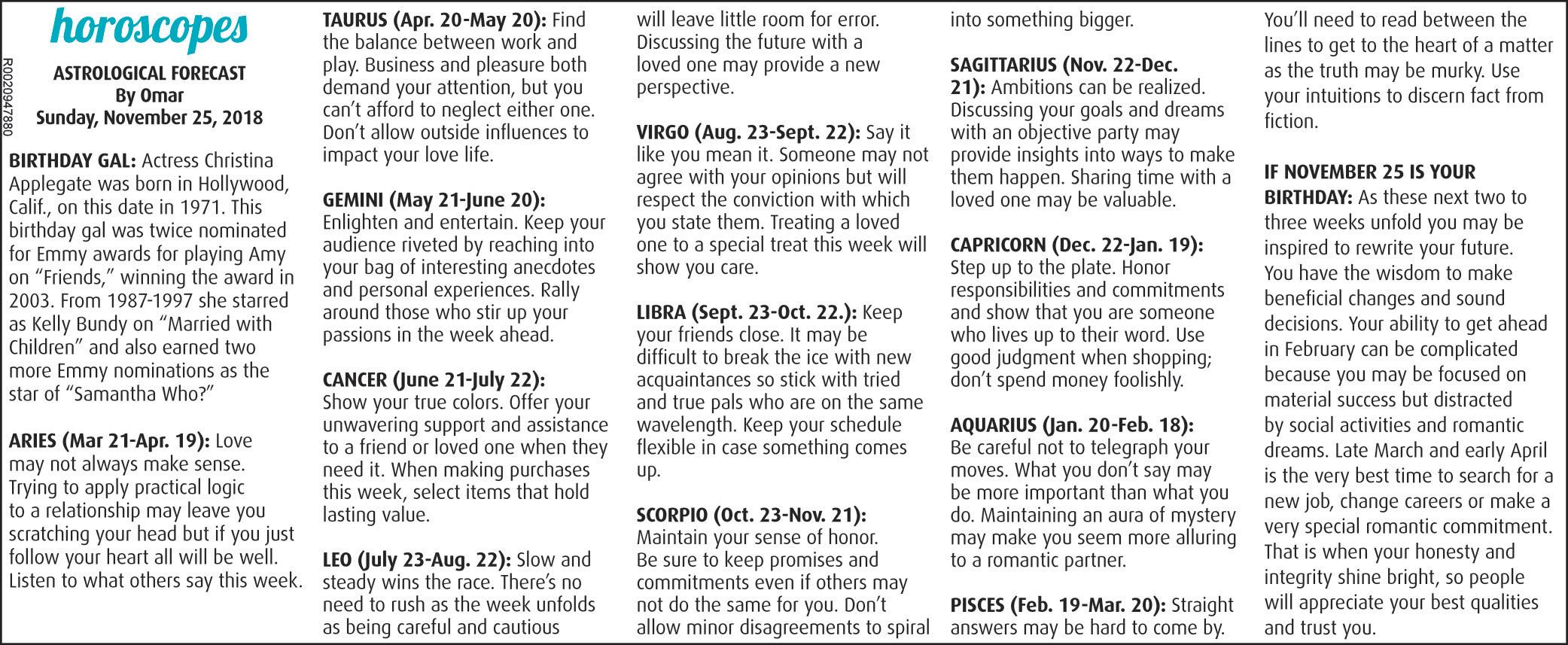
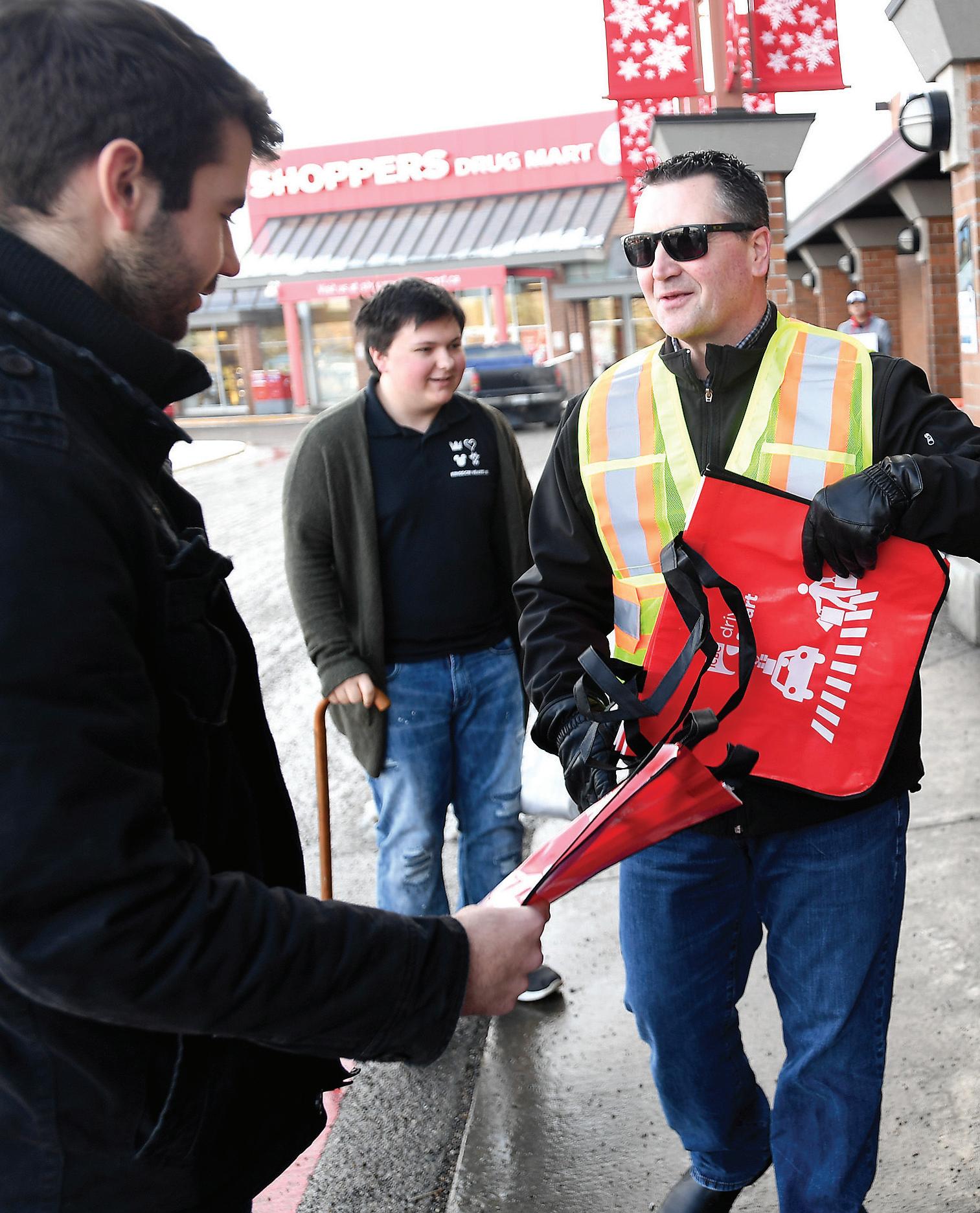
Citizen staff
Informal hearings will be held during this Monday’s city council meeting for two liquor-related applications:
• To extend the closing time at Trench Brewing and Distilling at 399-2nd Ave. to 3 a.m. from 11 p.m.
• To increase the occupancy to 360 people from 298 at Canadian Brew House and Grill, located at 3036 Recplace Dr. Staff is recommending council approve both applications.
Also on the agenda:
• An informal hearing will also be held for an application to increase the floor area and height of an accessory building planned for 7731 Sabyam Rd.
Amy SMART Citizen news service
VANCOUVER — The University of British Columbia is creating a new professorship to study the potential role of marijuana to treat opioid addiction, a move that faculty members say will begin to fill a cannabis research gap.
Epidemiologist and research scientist M-J Milloy has been appointed as the Canopy Growth professor of cannabis science at the university.
“Dr. M-J Milloy will be Western Canada’s first cannabis science professor at the University of British Columbia and the first professor in Canada focused on researching the role cannabis can play in the overdose crisis,” Mental Health and Addictions Minister Judy Darcy said at the announcement Friday.
Between January and September, more than 1,100 people died from suspected opioid overdoses, according to the ministry.
Milloy will lead clinical trials to explore how cannabis can help people with opioid use disorders stay on their treatment plans, the ministry said. Milloy’s research has already shown that daily cannabis use has been linked to an increased likelihood that people will maintain treatment and to a lower risk of street-involved youth starting to inject drugs.
As a first step in the new position, Milloy said he wants to build on a preliminary study of 2,500 drug users in Vancouver’s Downtown Eastside. That study showed that individuals who were starting methadone or suboxone, which are the first-line therapies for opioid use disorder, were more than 20 per cent more likely to still be on treatment at the six month mark if they were using cannabis daily, he said.
“What we would like to do as a next step is test that association in a clinical trial,” Milloy said.
Milloy has authored more than 150 peerreviewed articles on how policy can affect health outcomes for people who use drugs.
Marijuana company Canopy Growth is contributing $2.5 million, while the province is paying $500,000 to UBC for the position.
There are three letters of support in the agenda package for the proposal and staff is recommending approval.
• Appointments of council members to eight organizations will be made: Bulkley-Nechako Regional transit service committee; Canadian Urban Transit Associations transit board members committee; Prince George Council of Seniors; Prince George Community Foundation board of directors; Mount Milligan Community Sustainability Committee; Prince George Public Library board of directors; Prince George Regional Advisory Committee of the Northern Development Initiative Trust.
• Council will be asked to support a proposal from Rogers Communications Inc. to construct a wireless communications facility at 8715 Willowcale Road.
Mark NIELSEN Citizen staff mnielsen@pgcitizen.ca
Mathew Embry is hoping to change some minds when it comes to addiction.
The film maker directed Painkiller: Inside the Opioid Crisis, and he will be in Prince George on Tuesday night when the documentary is screened at University of Northern British Columbia’s Weldwood Theatre, 6 p.m. start.
“What we’re trying to do is challenge the stigma that surrounds addiction,” he said Friday in a telephone interview. “We’re trying to show that this opioid crisis is something that affects all of us, in all communities, no matter your gender, your socioeconomic status, your ethnicity.
“It crosses into all parts of our society.”
To that end, Embry said the film follows a number of families who are dealing with addiction as well as front-line workers and experts such as doctors and pharmacists who can speak to the problem at a high level.
“We try to engage the viewer through human stories but at the same time educate them in regards to what’s happening and hopefully what can be done,” he said.
Thanks to the mainstream media, Embry contends the image of the junkie shooting up on the street has come to symbolize the crisis. Along with unfortunate connotations – Embry takes issue with the term junkie – he said it fails to show just how widespread the problem is and the manifest forms it has taken.
Above all, he wants viewer to
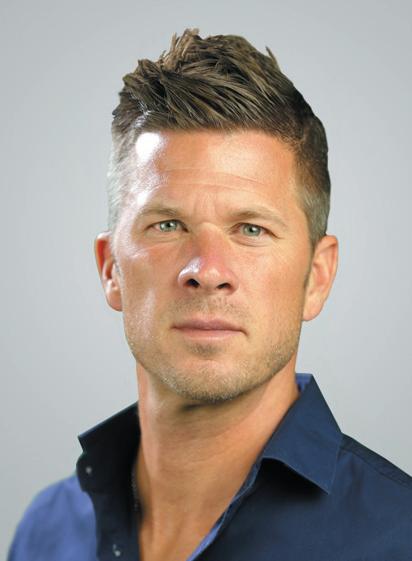
come away feeling a bit more compassionate for those caught in the trap of addiction and added childhood trauma is often at the root of such self-destructive behaviour.
“They’re using drugs to ease that pain, so if we start seeing people who are struggling with addiction as people who are in significant emotional or physical pain, rather than someone who doesn’t have will power or control, we’re going to rethink how we approach them,” he said. Embry is on a countrywide tour with the documentary and said it drew a strong turnout and a good panel discussion when it was shown in Calgary on Thursday night.
The documentary is also available online at telus.com/painkiller and on Telus Optik TV on Demand. For every view, Telus will donate $5, up to $50,000, to organizations providing care to those impacted.


OTTAWA — Members of Parliament sat late into the night Friday as the Liberal government put a rush on legislation ordering postal workers back to work.
The push came as Ottawa, as well as smaller towns in Ontario and British Columbia, and Sherbrooke, Que., became the latest targets of rotating strikes by the Canadian Union of Postal Workers.
MPs spent much of the day and the early evening debating a motion that would allow the House of Commons to deal speedily with a bill, tabled Thursday, that would put a stop to mail disruptions across the country.
That fast-tracking motion passed by a vote of 173-13, whereupon debate immediately resumed on the back-to-work bill itself. That debate was expected to continue for several hours before concluding with a vote on the legislation sometime in the wee hours this morning.
The Senate is then set to sit today and, if necessary, Sunday, to deal with the bill, which would go into effect at noon eastern time on the day following royal assent.
Despite the rush to pass the legislation, Labour Minister Patty Hajdu encouraged Canada Post and CUPW to remain at the bargaining table.
“They can still pull a deal off,” she said. That said, Hajdu added: “Obviously, we would prefer that the parties are able to negotiate an agreement together, but the time has come that we need to be prepared to take action if they cannot.”
Hajdu referred to mail delivery as an “essential service” and said small businesses that rely on the postal service to deliver their goods over the busy Christmas season could go bankrupt if the situation isn’t remedied quickly.
“And when I say small, I mean really small. I mean people that, you know, sell marmalade or handmade goods, that this is the most profitable time of their year and if they are unable to make their earnings this time of year, they very well might be facing the end of their business.”
Labour leaders and New Democrat MPs slammed the government for undermining the collective-bargaining process. The government has removed all incentive for Canada Post to reach a negotiated settlement now that the agency knows workers will be ordered back to work by early next week, they charged.
“The right to strike is an integral part of the collective bargaining process,” said Canadian Labour Congress president Hassan Yussuff. “Without it, an employer has no incentive to bargain in good faith, and
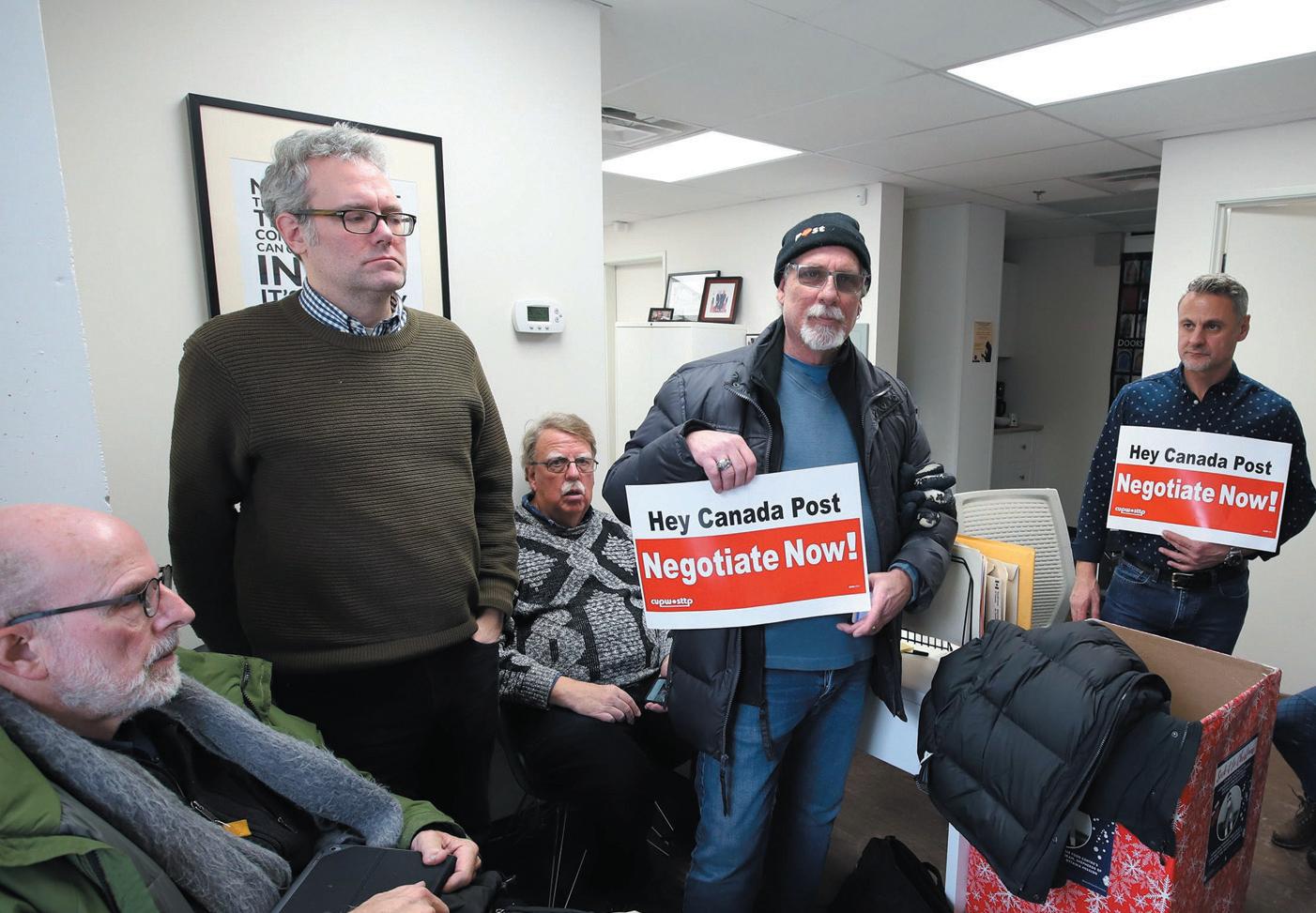
workers have no recourse to demand a fair process.”
Canada Post seems to have convinced Prime Minister Justin Trudeau that Christmas wouldn’t come without a back-to-work bill, added CUPW president Mike Palecek.
“The mail was moving, and people know it,” he said. “People have been getting their mail and online orders delivered. That was the point of our rotating-strike tactics, not to pick a fight with the public.”
NDP Leader Jagmeet Singh accused the Liberals of hypocrisy, professing to believe in the right to collective bargaining while bringing in what he called the “worst, most draconian” back-to-work legislation.
“They’ve shown their true face... that this government is not a friend of working people,” Singh said.
New Democrat MPs voted against the motion to speed up debate on the back-to-work legislation, with many making an elaborate show of walking out of the Commons after
voting, raising their fists in salute to postal workers watching from the public gallery. The votes of those who walked out were not counted.
Six New Democrats remained in the chamber – representative of the small number the party maintained would get a chance to speak during the subsequent expedited debate on the bill.
CUPW maintains the bill is unconstitutional and is threatening to challenge it in court.
The union won a court challenge against back-to-work legislation imposed on postal workers in 2011 by the previous Conservative government. The court ruled in 2016 that by removing workers’ right to strike, the bill violated their right to freedom of association and expression.
Hajdu argued that her bill is “dramatically different” from the “heavy-handed” approach taken by the Harper government and takes into account the concerns of both
the union and
But two independent
express their concern that the bill
not be constitutional. The pair said Hajdu had promised to issue a government analysis detailing how the bill does not violate the Charter of Rights and Freedoms but it still had not materialized by Friday evening.
CUPW members have held rotating walkouts for a month, causing massive backlogs of unsorted mail and packages at postal depots, though Canada Post and the union dispute how big the pileup is. Canada Post says it could take weeks –even stretching into 2019 – to clear the backlog that has built up, especially at major sorting centres in Toronto, Montreal and Vancouver.
CUPW’s 50,000 members, in two groups, are demanding better pay for rural and suburban carriers, more job security and minimum guaranteed hours.


CITIZEN
Violinist Allison Bell, Simon Cole on bass clarinet and Erica Skworon on oboe – all of Alban Classical – presented About Town at the Two Rivers Gallery, a free concert at noon on Thursday.
Dirk MEISSNER Citizen news service
VICTORIA — A lawyer representing the two suspended top officials at the British Columbia legislature is demanding they be reinstated as soon as possible while an RCMP investigation continues.
The letter from Mark Andrews to the NDP, Liberal and Green house leaders calls for the legislature to rescind a motion that placed sergeant-at-arms Gary Lenz and clerk of the house Craig James on administrative leave.
Andrews says Lenz and James deny any wrongdoing and they do not know why they have been placed on leave.
“They are the most senior and long-serving and loyal servants of the legislative assembly whose reputations are in the process of being destroyed by these events,” says the letter dated Friday, which was released by the Liberals.
“As a matter of basic fairness, they deserved to be told what it is alleged that they have done and to be given an opportunity to respond to those allegations.”
The three-page letter is addressed to the NDP’s Mike Farn-
worth, Liberal Mary Polak and the Green’s Sonia Furstenau.
“Time is of the essence if some of the damage to our clients and to the public respect for the workings of the legislative assembly is to be undone,” says the letter. “To be clear: our clients are not asking for the investigation to be stopped. They will co-operate with the investigation and any reasonable terms connected therewith, and wish it to proceed with dispatch.”
Opposition Liberal Leader Andrew Wilkinson said the letter raises concerns about the government’s preparations for potential legal issues prior to a meeting on Monday with legislature Speaker Darryl Plecas and the three house leaders.
He said the Liberals followed the plan to place Lenz and James on leave without asking questions because they believed the government had provided solid legal grounds to make the moves. But the Liberals have questions now, Wilkinson said.
“We want to know what the government’s position is on the legal issues raised in the letter because we have to take legal advice from the Ministry of the Attorney General,” he said. “If they did not
do the due diligence before marching these people out the door then there’s a serious question about how the NDP handled this.”
NDP house leader Mike Farnworth said in a statement the motion was approved unanimously by the legislature on Tuesday and the decision to introduce the motion was made by the house leaders for all three parties.
“The RCMP are conducting an active investigation with the assistance of two special prosecutors appointed by the independent B.C. Prosecution Service,” the statement said. “This is a serious matter and the appropriate course of action for all is to refrain from speculation and allow the police to do their job. I have no further comment at this time.”
Farnworth, Polak and Furstenau said Thursday that when they met with Plecas on Monday evening to discuss the motion they also rejected a plan by Plecas to appoint Alan Mullen, his special adviser and friend, as acting sergeant-at-arms. Mullen, who could not be reached for comment on Friday was hired by Plecas in January to look at some matters of concern to him, which included an investigation of senior legislature staff. He
has said he turned over information he gathered to the RCMP in August.
On Friday, Polak requested an emergency meeting of the all-party committee that oversees the management functions of the legislature. Plecas is the chairman of the committee.
Polak and Wilkinson also released a letter they sent to Farnworth and Furstenau with 11 questions after receiving the letter from Andrews. Most of the questions deal with the legal advice Plecas and Farnworth received before Monday’s meeting on the motion that was presented to the legislature. The letter from Andrews says neither Lenz nor James received any advanced notice of the motion and were “ejected from the legislature in what appears to have been a deliberately public and humiliating manner, on the basis of secret allegations.”
Former B.C. attorney general Wally Oppal, who was appointed as a second adviser to Plecas on Thursday, described the investigation as an alleged “complex criminal matter,” but he wouldn’t elaborate.
“I can understand the public being concerned about this, but time
will tell and it will take some time before all this comes out,” Oppal said Friday after meeting with Plecas and Mullen. “Those things take time. There’s a very complex criminal matter going on.”
Neither the RCMP nor the B.C. Prosecution Service have commented on the nature of the investigation and have not described it as a criminal matter.
Oppal said details of investigations are kept private to ensure fair trials if charges are ever laid.
“Investigations go on all the time and sometimes they result in charges and sometimes they don’t,” Oppal said.
Oppal said attention has focused on the Speaker’s actions in bringing the investigation forward and the hiring of Mullen, but those are secondary details to the investigation.
“The Speaker is a well-spoken, intelligent person with a great academic background and he didn’t do anything in a capricious way,” he added.
Oppal said the Speaker’s actions throughout the unfolding situation at the legislature were based on advice he received, but he wouldn’t say who advised the Speaker.

For more than 800 years – ever since the Magna Carta was issued in 1215 – British and then American philosophers and politicians have been fighting to limit the power of their political leaders. That is why the English Civil War and the American Revolution were fought. That is why in 1689 the English Parliament issued a Bill of Rights that declared that “suspending the laws or the execution of laws by regal authority without consent of Parliament is illegal.”
That is why in 1789 the American states adopted a Constitution that declared the president “shall take Care that the Laws be faithfully executed,” and why the First Congress added 10 amendments to the Constitution “in order to prevent misconstruction or abuse of its powers.” And that is why, less famously, Congress in 1883 passed the Pendleton Civil Service Reform Act establishing the principle that federal employees would be hired based on merit, not political connections, and would serve the whole country rather than just their political party. If U.S. President Donald Trump is familiar with this history, he gives no sign of it. As others have noted, his governing principle is borrowed from King Louis XIV of France: “L’état, c’est moi” – I am the state. If you keep that simple maxim in mind, his conduct, otherwise inexplicable, becomes all too predictable. Whatever he does, he does for his own benefit. The conduct of others
he judges based not on whether it’s good for the United States but whether it’s good for Trump.
The president cannot be bothered to go out into the rain to honour America’s war dead – or to interrupt his frequent golf outings for an unpleasant and possibly perilous trip to visit U.S. troops in a war zone. When asked about soldiers having to spend Thanksgiving away from their families on a pointless political deployment in Texas, Trump expressed complete indifference. “Don’t worry,” he said on his way to Mar-a-Lago.
In Trump’s case it’s hard to have any faith that he will act in accordance with a higher good.
“These are tough people.” No wonder Trump refers to “my military.” He treats its members with all the consideration he might accord to groundskeepers at Mar-a-Lago.
Trump feels no compunction about trashing American heroes such as John McCain and William McRaven. In his own mind, they had it coming because they dared to criticize him, which is the only thing that matters to him. Trump called McRaven the worst names he could imagine – a “Hillary Clinton fan” and an “Obama backer” – because this meant that McRaven did not support him. Trump cannot process the possibility that McRaven might be apolitical and that, in calling out attacks on the press and abuse of the security-clearance process, the retired admiral might be acting not out of hatred for Trump but out of love for the
country. In Trump’s mind, loyalty to a cause higher than his own well-being is simply unimaginable. The same solipsism is evident in Trump’s nonchalant reaction to the Saudi murder and dismemberment of Washington Post contributor Jamal Khashoggi. Trump dismissed the CIA’s conclusion that Crown Prince Mohammad bin Salman ordered this crime, writing “maybe he did and maybe he didn’t!” All that matters to Trump is preserving the U.S. relationship with Saudi Arabia, which he justified with fanciful and fictitious figures – $110 billion in Saudi arms sales and $450 billion in general Saudi investment.
One suspects Trump’s sympathies lie with the Saudis for more personal reasons. The Saudi king and crown prince laid out the red carpet, literally, for Trump on his first trip abroad as president in 2017. They haven’t criticized him. Why should he criticize them? He is tougher on the SEAL commander who was responsible for killing Osama bin Laden than on the Saudi despot who was responsible for killing Jamal Khashoggi – simply because the latter is nicer to him than the former.
And, lest we forget, Saudis have shown their respect for Trump in tangible ways. He now denies doing business with Saudi Arabia, but in 2015 he bragged: “Saudi
Ayear ago, several days before American Thanksgiving, my mother was sent into hospice care to die. She was weak and declining by the hour. Three doctors told us that a nasty blood condition called sepsis would soon stop her heart.
I had a hunch they were wrong.
The facility near her home in Salt Lake City was short-staffed because it was Thanksgiving weekend. I couldn’t persuade a doctor to come in and see her, and I felt as if my window to help her was closing fast.
So I spun into action: I called a mobile phlebotomist (the people who stick you to take a blood sample) to come over right away to do an independent blood panel. It was the best call I ever made. We found out that my mother wasn’t dying of sepsis at all – instead, she had critically low potassium. My mom, as it turned out, needed bananas.
While the day after Thanksgiving is traditionally known as Black Friday to most Americans, my family now calls it something else: Bright Friday. It was the day we saved my mom.
Since last Thanksgiving, I’ve had 365 days with my mother that I didn’t expect to have. Now 77, she was greatly weakened by her ordeal and requires a long-term care centre. But her mind is still active, and her sense of humour is as quirky as ever.
In my three-days-a-week visits, we’ve settled into a comfortable routine: after I bring her a homemade peanut butter smoothie (with extra banana), I settle in next to her bed to read the day’s headlines and fill her in on my two kids’ latest dramas. Then we’ll vent about politics while I spritz her with her favorite “Alien” or “Joy” perfume, give her a manicure or rub lavender lotion into her fragile skin.
On sunny days, I’ll wheel her outside to look at the mountains and check on the family of quail that has set up house in the shrubbery ringing the courtyard.
When she was close to dying last fall, I thought often about the last trip I’d taken with her just seven months before. For more than a decade, my mother had invited me to join her during her annual trip to the International UFO Congress in Arizona every February, and I’d always laughed and declined.
Then last year, when I could see that my mother’s step had drastically slowed (she needed a cane to get around), it hit me that our years together might be numbered. We weren’t always close. When my parents divorced and I was 11, my brother and I, the oldest two, went to live with my father. My mother kept my other brother and sister, the youngest two.
Old wounds had healed with time, and I thought attending the UFO congress together might be fun.
And it was. For three days, we attended seminars about spaceships, crop circles and alien abductions and shopped for E.T.themed merchandise, including little green alien necklaces, I Don’t Believe in Humans T-shirts and Fifty Shades of Greys books.

Mostly, though, we laughed and sipped bright green margaritas and just enjoyed being together as a mother and daughter for the first time in years.
Our getaway took on new meaning in late September last year when my mom’s left knee collapsed while she was preparing for a yard sale. She ended up in a rehab centre, then the hospital, and my siblings and I were told that sepsis in her knee had moved to her kidneys. She needed immediate dialysis. The treatment boosted her kidneys’ function, but her outlook was still poor. Three doctors said it was time to move her into hospice and say our goodbyes.
In her hospice room at a care centre near the hospital, my brothers, sister and I took shifts in a cushy recliner next to her bed. As she cycled in and out of sleep, I talked to her
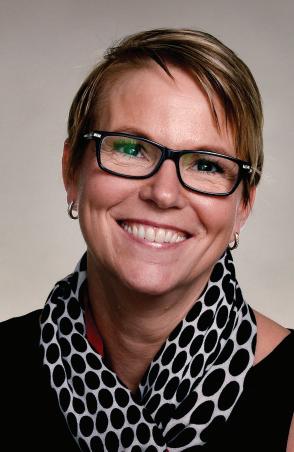
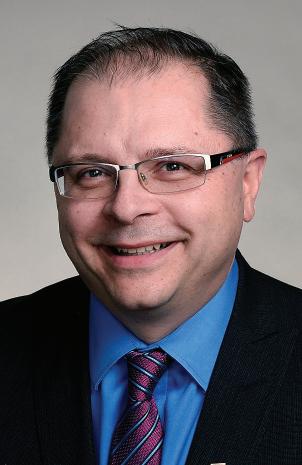
about her final requests.
Nothing fancy,” she told me. “Let’s keep it simple.” She wanted sunflowers at her memorial service and lots of family photos. “Champagne,” she said, “would also be nice. And happy music.”
I rested my head on her chest to feel her warmth.
“Mama, I love you. This is hard, but I will try to be brave,” I told her.
“I love you, too,” she replied, taking my hand. “Think of the happy times. Remember your pink canopy bed? I can still see you sleeping there.”
I went home Thanksgiving night, but, unable to sleep, I went outside in my pajamas and looked at the stars, clutching the snowy owl necklace that I’d worn since my mother’s diagnosis. She always loved snowy owls and collected memorabilia as far back
Arabia, I get along with all of them. They buy apartments from me. They spend $40 million, $50 million. Am I supposed to dislike them? I like them very much.” Perhaps another president would not let such pecuniary considerations affect his decisions, but in Trump’s case it’s hard to have any faith that he will act in accordance with a higher good. His lack of regard for the principles of constitutional governance is evident most flagrantly in his demands that the Justice Department end the investigation of him and, as the New York Times just reported, launch investigations of James Comey and Hillary Clinton. Trump’s attempts to politicize justice have been thwarted so far – but for how much longer, with a political henchman now installed as acting attorney general? In any case, obstruction of justice, even if unsuccessful, remains an impeachable offense, as Richard Nixon found out. How could any president so grievously misuse his power? Simple. Trump doesn’t recognize any loyalty to any cause other than his own well-being. Let us hope that our political system is strong enough to disabuse him of this dangerous conceit that he shares with a long line of absolute monarchs.
— Max Boot is the Jeane J. Kirkpatrick senior fellow for national security studies at the Council on Foreign Relations and a global affairs analyst for CNN. He is the author of The Corrosion of Conservatism: Why I Left the Right.
It’s not a perfect life (she’ll never walk again), but my mom is happy on most days and thankful to be alive.
as I can remember. I’d bought this one for my mom at an English sorcery shop in 2015 and carried it with me to Stonehenge, where my family had a tour at sunset. When the sun appeared in the middle of the Great Trilithon, I held up the necklace, knowing that my mother would love that I’d performed a small ritual.
At that moment, I felt connected to her and smiled, wondering whether the necklace would now have some sort of power. As I stood in my chilly backyard last year and searched the stars for the Pegasus and Pisces formations the way my mother had taught me, I was overcome with a feeling that the medical experts were wrong. I decided my mother was not dying. I left several messages for the doctor on call at the care centre to come and see her, but he didn’t respond.
After I ordered the blood panel on my own, the phlebotomist called later that night.
“I’ll fax the results in the morning,” he said, “but I need to let you know that your mom’s potassium is the lowest I’ve ever seen. It’s critical. She could have heart failure.”
My mom’s nurse said she couldn’t give her potassium without a doctor’s approval. So my brother, who was taking a shift in the recliner, rushed to the grocery store for potassium pills, which he crushed up in water for our mother.
Early the next morning, I was there when the fax results came in showing that if my mother ever had sepsis, it had mysteriously vanished. I immediately called an ambulance to take her to a hospital. In the emergency room, a doctor said my mom never should have been in hospice care. After nearly a month in the hospital, she was sent to a new care centre, which was worse than the first. Finally, on the third try, we got it right.
The staff where she is now is attentive and caring and nobody bats an eye if my mother says, “The lunch today looks like cat food.”
It’s not a perfect life (she’ll never walk again), but my mom is happy on most days and thankful to be alive. I can’t stop smiling when I think back on the recent afternoon when a priest came to her room by mistake to deliver last rites.
“Oh, hell no!” my mother exclaimed. “I’m not going anywhere!” We laughed until she nearly fell out of her bed. On this Bright Friday, I’ll toast her again with her favourite champagne. My mom says she’s up for two glasses. And maybe a banana.
— Cathy Free is a Salt Lake City-based journalist and former newspaper columnist.


Brady DENNIS, Chris MOONEY Citizen news service
The U.S. federal government on Friday released a long-awaited report with an unmistakable message: the effects of climate change, including deadly wildfires, increasingly debilitating hurricanes and heat waves, are already battering North America, and the danger of more such catastrophes is worsening.
The report’s authors, who represent numerous U.S. federal agencies, say they are more certain than ever that climate change poses a severe threat to citizens’ health and pocketbooks, as well as to the country’s infrastructure and natural resources. And while it avoids policy recommendations, the report’s sense of urgency and alarm stand in stark contrast to the lack of any apparent plan from U.S. President Donald Trump to tackle the problems, which, according to the government he runs, are increasingly dire.
The congressionally mandated document – the first of its kind issued during the Trump administration – details how climate-fueled disasters and other types of worrisome changes are becoming more commonplace throughout the country and how much worse they could become in the absence of efforts to combat global warming.
sil fuel assets await us if we don’t act.”
That report is striking in its clear statement that climate change is not only already affecting the U.S., but that the effects are getting worse.
“This report draws a direct connection between the warming atmosphere and the resulting changes that affect Americans’ lives, communities, and livelihoods, now and in the future,” the document reads, concluding that “the evidence of human-caused climate change is overwhelming and continues to strengthen, that the impacts of climate change are intensifying across the country, and that climate-related threats to Americans’ physical, social and economic well-being are rising.”
We have wasted 15 years of response time. If we waste another five years of response time, the story gets worse. The longer you wait, the faster you have to respond and the more expensive it will be.
The report finds that the continental United States already is one degree Celsius warmer than it was 100 years ago, surrounded by seas that are on average 22.8 cm higher and being racked by far worse heat waves than the nation experienced only 50 years ago. But those figures offer only the prelude to even more potentially severe impacts. The report suggests that by 2050, the country could see as much as 1.2 C additional degrees of warming in the continental United States.
— Gary Yohe, professor of economics and environmental studies
Already, western mountain ranges are retaining much less snow throughout the year, threatening water supplies below them. Coral reefs in the Caribbean, Hawaii, Florida and the United States’ Pacific territories are experiencing severe bleaching events.
Wildfires are devouring ever-larger areas during longer fire seasons. And the country’s sole Arctic state, Alaska, is seeing a staggering rate of warming that has upended its ecosystems, from once iceclogged coastlines to increasingly thawing permafrost tundras.
The National Climate Assessment’s publication marks the government’s fourth comprehensive look at climate-change impacts on the United States since 2000. The last came in 2014. Produced by 13 federal departments and agencies and overseen by the U.S. Global Change Research Program, the report stretches well over 1,000 pages and draws more definitive, and in some cases more startling, conclusions than earlier versions.
The authors argue that global warming “is transforming where and how we live and presents growing challenges to human health and quality of life, the economy, and the natural systems that support us.”
And they conclude that humans must act aggressively to adapt to current impacts and mitigate future catastrophes “to avoid substantial damages to the U.S. economy, environment, and human health and well-being over the coming decades.”
“The impacts we’ve seen the last 15 years have continued to get stronger, and that will only continue,” said Gary Yohe, a professor of economics and environmental studies at Wesleyan University who served on a National Academy of Sciences panel that reviewed the report. “We have wasted 15 years of response time. If we waste another five years of response time, the story gets worse. The longer you wait, the faster you have to respond and the more expensive it will be.”
That urgency is at odds with the stance of the Trump administration, which has rolled back several Obama-era environmental regulations and incentivized the production of fossil fuels. Trump also has said he plans to withdraw the nation from the Paris climate accord and questioned the science of climate change just last month, saying on CBS’s 60 Minutes that “I don’t know that it’s man-made” and that the warming trend “could very well go back.”
Furthermore, as the Northeast faced a cold spell this week, Trump tweeted, “Whatever happened to Global Warming?”
This shows a misunderstanding that climate scientists have repeatedly tried to correct – a confusion between daily weather fluctuations and long-term climate trends.
The White House did not immediately respond to a request for comment on Friday’s report. However, the administration last year downplayed a separate government report calling human activity the dominant driver of global warming, saying in a statement that “the climate has changed and is always changing.”
Given that history, some of the hundreds of scientists and federal officials who spent months working on the detailed document were frustrated, but not surprised, that the administration chose to release it on the day after Thanksgiving – typically one of the slowest news days of the year.
Several people involved in the report said its release originally had been planned for early December, but after a behind-the-scenes debate in recent weeks about when to make it public, administration officials settled on Black Friday.
Several federal experts who participated in a media call after the release of the report on Friday were repeatedly asked about the timing of its release on a day when the country’s attention is likely elsewhere.
For the most part, they demurred, saying that in part the report was finished early and that they wanted to make sure it was out ahead of both an American Geophysical Union gathering next month, as well as a major international climate conference in Poland around the same time. Rather, they implored reporters to focus instead on the contents of the report, which they said had not been tinkered with by administration officials.
“This report has not been altered or revised in any way because of political considerations,” Monica Allen, a spokeswoman for the National Oceanic and Atmospheric Administration (NOAA), told reporters. She said the decision on when to release it had been made during the past week, but added, “It’s not as significant as the content of what’s in the report.”
Sen. Sheldon Whitehouse, D-R.I., said the report shows how climate change will affect all Americans.
“No matter how hard they try, the Trump administration can’t bury the effects of climate change in a Black Friday news dump – effects their own federal government scientists have uncovered,” he said in a statement. “The president says outrageous things like climate change is a hoax engineered by the Chinese and raking forests will prevent catastrophic wildfires, but serious consequences like collapsing coastal housing prices and trillions of dollars in stranded fos-
By that same year, in a high-end global-warming scenario, coral reefs in Hawaii and the U.S. Pacific territories could be bleaching every single year – conditions in which their survival would be in severe doubt. A recordwarm year like 2016 would become routine.
Key crops, including corn, wheat and soybeans, would see declining yields as temperatures rise during the growing season. The city of Phoenix, which experienced about 80 days per year over 38 C around the turn of the century, could see between 120 and 150 such days per year by the end of the century, depending on the pace of emissions.
And those who face the most suffering? Society’s most vulnerable, including “lower-income and other marginalized communities,” researchers found.
In another major step, the authors of the new report have begun to put dollar signs next to projected climate damage, specifically within the United States.
In a worst-case climate-change scenario, the document finds, labour-related losses by the year 2090 as a result of extreme heat – the sort that makes it difficult to work outdoors or seriously lowers productivity – could amount to an estimated $155 billion annually. Deaths from temperature extremes could take an economic toll of $141 billion per year in the same year, while coastal property damage could total $118 billion yearly, researchers found. Of course, mitigating climate change would also mitigate this damage, by as much as 58 per cent in the case of high-temperature related deaths, the report finds.

Firefighters work to keep flames from spreading through an apartment complex as a wildfire burns through Paradise, Calif., on Nov. 9.
Climate change is contributing to natural disasters like wildfires, according to a U.S. government report released on Friday.





a mobile home park in Paradise, Calif., on Friday.
John ROGERS Citizen news service
The so-called Camp Fire in Northern California in many ways has become the worst wildfire in the history of a state whose topography and climate have long made it ripe for devastating blazes.
With terrain ranging from steep, treetopped mountains to dry, brush-covered hillsides, and matched with a climate that frequently varies from light rainy seasons to drought years, California has been home to deadly, destructive wildfires since recordkeeping began in the early 20th century.
Figuring out just how bad a wildfire is requires taking into account several statistics, including not only lives lost and homes destroyed but other buildings burned and the amount of forest, timberland and brush laid to waste.
A look at what makes for the worst wildfire and where the most recent blaze falls in those categories:
The Camp Fire, which destroyed the historical mining town of Paradise, is the most deadly in state history, with 84 fatalities as of Friday, according to statistics from the California Department of Forestry and Fire Protection. It’s also the deadliest in the U.S. in a century.
With hundreds of people still reported missing, the death count is likely to rise.
The state’s second-deadliest wildfire, Los Angeles’ 1933 Griffith Park blaze, killed 29 people, most of them workers hired under a Depression-era Works Progress Administration program to widen roads and build trails in the sprawling wilderness park on the edge of downtown Los Angeles.
Those workers had no experience fighting fires and no water readily available when flames erupted. They became trapped in a canyon when they tried to stop it with shovels and their feet by stomping on hot spots.
The Tunnel Fire of 1991 killed 25 when it roared down the densely populated hillsides of Oakland, trapping people in homes and on narrow, winding streets. This third-deadliest wildfire began as a small blaze that firefighters thought they had contained, only to see it roar back to life when smouldering embers ignited other brush as fierce winds erupted.
The Mendocino Complex Fire this year
With hundreds of people still reported missing, the death count is likely to rise.
blackened more than 459,000 acres , or 1,857 square kilometres, much of it in the Mendocino National Forest, making it the largest in state history, state statistics say.
That’s nearly triple the size of the Camp Fire that has consumed more than 153,000 acres, or 620 square kilometres. But only one person died in the 2017 blaze.
Last year’s Thomas Fire, which scorched about 1,140 square kilometres in Ventura and Santa Barbara counties, is the state’s second largest. It killed two people. The Cedar Fire, which roared across about 1,106 square kilometres in 2003, was the largest in state history at the time and is now the third largest. It is also the fifth deadliest. The blaze, which began in the Cleveland National Forest, killed a firefighter and 14 other people. Most were residents of a rural San Diego County canyon who didn’t have time to outrun the wind-driven flames.
Currently the Camp Fire is 16th on this list.
This statistic is based on total structures destroyed, including homes, businesses and other buildings. The Camp Fire is far and away the leader with nearly 19,000 buildings lost, including 13,954 homes. Last year’s Tubbs Fire, which burned through California wine country, is a distant second at 5,636 structures. It’s also the state’s fourth-deadliest wildfire, having claimed 22 lives. The third deadliest, Oakland’s Tunnel Fire, is also the third most destructive, claiming 2,900 buildings.
Statistically, it would appear so. Fifteen of the 20 most destructive California wildfires have occurred in the past 20 years. During that same period, 10 of the state’s 20 deadliest wildfires have broken out, including four in just the past two years. Sixteen of the state’s 20 largest wildfires have erupted since 1998.
Tijuana mayor declares ‘humanitarian crisis’ over migrants
TIJUANA, Mexico — The mayor of Tijuana has declared a humanitarian crisis in his border city and said Friday he was asking the United Nations for aid to deal with the approximately 5,000 Central American migrants who have arrived.
The comments by Mayor Juan Manuel Gastelum came as city officials and volunteers worked together to assist the 4,976 men, women and children, most of whom were camped out at a makeshift shelter at a sports complex after spending more than a month on the road. The Trump administration has spent weeks lambasting the caravan, which it said was filled with criminals, gang members and even – it insinuated at one point without any proof – terrorists.
Manuel Figueroa, who leads the city’s social services department, said Tijuana was bringing in portable toilets and showers, as well as shampoo and soap. It wasn’t enough.
“Because of the absence, the apathy and the abandonment of the federal government, we are having to turn to international institutions like the UN,” Figueroa said.
Rene Vazquez, 60, a Tijuana resident who was volunteering at the stadium, said Mexico’s federal government ignored the problem by allowing the caravan to cross the country without stopping. Now the
city of 1.6 million is stuck with the fallout.
“I don’t have anything against the migrants, they were the most deceived, but this is affecting us all,” Vazquez said. Gastelum vowed not to commit the city’s public resources to dealing with the situation. On Thursday, his government issued a statement saying that it was requesting help from the UN’s Office for the Coordination of Humanitarian Affairs.
Vasquez, who plays on a soccer team that uses the sports complex, said Mexico should step up now and process humanitarian visas for the group so they can start looking for work. Meanwhile, since his soccer team can no longer practice in the stadium, he was spending time passing out donated pizzas and roasted chicken to the migrants.
The migrant caravan that left Honduras in mid-October was mostly well received by the towns it passed through along the way to the border. Even cities with few resources made sure the migrants had food and a place to rest. But in those places, the caravan stayed at most two nights – with the exception of Mexico City. In Tijuana, many of the migrants who are fleeing violence and poverty are seeking asylum in the United States and face the prospect of spending months in the border city before they have the opportunity to speak with a U.S. official.
REDBLACKS SET FOR GREY CUP CLASH
Page 12
Ted CLARKE Citizen staff tclarke@pgcitizen.ca
Facing two must-win situations to get into the single-A boys volleyball playoffs, the Cedars Christian Eagles lived up to the pressure.
Off to a 0-3 start at the 16-team tournament at the College of New Caledonia, the ninth-ranked Eagles defeated the No. 8 Fernie Falcons in three sets Friday afternoon (25-23, 22-25, 15-6), then beat the No. 11 Unity Christian Flames of Chilliwack 2-0 (26-24, 28-26) to advance to the quarterfinals against the Credo Christian Kodiaks of Langley.
“The boys rose to the challenge and got a couple of wins and they played well,” said Cedars head coach Roland Rempel.
“Fernie had a couple of big hitters and we were a little flat in the second (set) and gave it away but came out really well in the third. We started off with a 5-0 lead and it was 8-2 at the switch.
“They’ve been getting better and better all tournament. We started off a little sluggish against Bulkley Valley and were a little sluggish against Vernon but played some good defence and we almost beat St. Andrews, who finished second in our pool.”
Cedars lost its morning match Friday to No. 7 St. Andrews of Victoria in a three-set affair that went down to the wire. The Sabres won 25-21, 20-25, 15-13.
The Eagles finished third in the B Pool with a 2-3 record and now can finish no worse than eighth, which Rempel says is no surprise.
“My goal all year was for us to be top-eight and we will be topeight,” Rempel said. “The cards aren’t in our favour (to advance to the semifinals), we just played a match and now we’re back on the floor to play Credo, and they had a good hour-and-a-half between
their last match.
“We’re a little tired and we’re a small team at eight (players) so most guys see the floor all the time. If fatigue doesn’t set in we’ve got a shot.”
The Eagles went on to lose to
Credo Christian 3-0 (25-20, 25-6, 25-18) and will play for seventh place today at 11:10 a.m., against the loser of Friday’s St. AndrewsKelowna Christian playoff.
Ranked No. 3 provincially, Credo Christian came up with the biggest upset of the round-robin tournament, knocking off the top-ranked Centennial Seahawks of Terrace 2-0 (25-21, 28-26) to finish at 4-0 and claim top spot in the A Pool.
Despite the quarterfinal loss for Cedars, Joel Nelson, the Eagles’ Grade 12 captain, has been a standout at the power hitter position all tournament.
“He’s been dynamite, making the backdoor attacks, just solid on defence and getting his serves in – he’s been leading us by example,” said Rempel. “Our defence is what’s been keeping us in the games, actually, because we’re not the biggest team or the hardest-hitting team and we don’t have the biggest hitters. But what we do have is a bunch of guys who play defence and are following the system we put in place and they’re starting to hit the spots we teach them to and good things have been happening.”
Vernon Christian went 4-0 to win the B Pool and advanced to a quarterfinal playoff against Mt. Sentinel of South Slocan. The other quarterfinal matchup Friday night was Centennial versus Bulkley Valley.
The quarterfinal winners will meet in the semifinals today at 9:10 a.m. Placement matches will follow at 11:10 a.m., 12:20 and 1:30 p.m., followed by a skills competition at 3. The bronzemedal game is scheduled for 4 p.m., and the championship match is at 6.


Citizen news service
SAN JOSE, Calif. — Erik Karlsson had a goal and two assists, Joe Thornton surpassed a big milestone for the second time this month, and the San Jose Sharks beat the slumping Vancouver Canucks 4-0 on Friday night.
Thornton had two assists, moving him past Mario Lemieux for 11th place on the NHL list. The 39-year-old centre scored his 400th goal on Nov. 13.
The Sharks took the early lead on Logan Couture’s eighth goal midway through the first period.
Thornton passed Lemieux with his 1,034th assist late in the first period when Timo Meier redirected his shot with 10 seconds remaining near the end of a fourminute double-minor on Derrick Pouliot for high sticking.
Thornton had another assist in the third period on Karlsson’s second goal of the season. His 1,035 assists include 750 with the Sharks.
San Jose sent the Canucks to their eighth straight loss. Vancouver has been outscored 34-16 over that stretch.
Vancouver had three power plays.
San Jose has given up just two power-play goals in its last 19 games. The Sharks have killed off 48 of 50 penalties (96 per cent) over that stretch.
The Sharks broke the game open midway through the third period on Melker Karlsson’s first goal of the season.

Sharks goalie Aaron Dell had 19 saves.
Canucks goalie Anders Nilsson turned back 20 shots. NOTES: The Sharks are 10-0-1 in their last 11 games against Vancouver with six
AP PHOTO
straight wins at San Jose.... After concluding a six-game homestand on Friday, San Jose plays 25 of its next 40 games on the road.... Sharks F Joe Pavelski had his fivegame point streak snapped.
COLUMBUS, Ohio (AP) — Cam Atkinson scored for the sixth straight game, and the Columbus Blue Jackets beat the Toronto Maple Leafs 4-2 on Friday night to remain atop the Metropolitan Division. Josh Anderson had two goals and Markus Hannikainen also scored, helping the Blue Jackets avenge a 4-2 loss at Toronto on Monday. Sergei Bobrovsky stopped 32 shots for his eighth win.
Toronto dropped consecutive games for the first time since Oct. 29 and Nov. 1. It had won four in a row and seven of eight before Wednesday’s 5-2 loss at Carolina. Ron Hainsey and Kasperi Kapenen scored for the Maples Leafs (15-8-0).
LAS VEGAS (AP) — Alex Tuch had a goal and an assist in his 100th career game, and the Vegas Golden Knights beat the Calgary Flames 2-0 on Friday.
The Golden Knights avenged a 7-2 loss at Calgary on Monday, when the Flames opened up a 5-0 lead after just one period. The visit to Vegas marked the first time Calgary has been shut out this season.
Colin Miller scored his first goal of the season, and Marc-Andre Fleury made 29 saves in his fourth shutout of the season. It also was the 52nd shutout of his career, moving him into sole possession of 24th place on the NHL list, one shy of Pekka Rinne.

Ted CLARKE Citizen staff tclarke@pgcitizen.ca
After going missing in action their previous two games, the Prince George Cougars brought out their coveralls and steel-toed boots and rediscovered the bluecollar efforts they’ve needed to earn their WHL paycheques this season.
The Regina Pats had right winger Nick Henry cracking their whip and came close to undoing the hard work the Cougars brought to the rink at CN Centre Friday.
The visitors from Saskatchewan outshot the Cougars and outplayed them at times but could not outscore them and when it came down to crunch time, goalie Isaiah DiLaura was there to bail his team out on the way to 5-3 victory.
The win kept the Cougars (1010-1-2) in third place in the B.C. Division, while Regina (8-17-0-0) remained fifth in the East Division.
Aside from the damage Henry did with his three goals, the Cougars won this game by winning the battles in the corners and in front of the net. They rarely left the Pats uncovered and when there was a chance for a turnover it was usually a Cougar gaining possession.
Five goals were scored in an eventful second period. The Cats’ two-goal lead was cut in half 42 seconds in when Henry deflected in Aaron Hyman’s point shot. That came nine seconds after the Cougars killed off a penalty.
Cougars winger Josh Maser had an answer for that, less than two minutes later. He turned and fired from the face-off circle, right after Matej Toman won the draw in the Regina end, and it slipped through the pads of goalie Max Paddock.
The Cougars have proven vulnerable all season in second periods and Henry, a Colorado Avalanche draft pick, exposed their middle-frame vulnerability with back-to-back goals to complete his hat trick. The second of the night for the native of Portage la Prairie, Man., was a thing of beauty. Henry took a pass from linemate Austin Pratt and went wide around Rhett Rhinehart, finishing with a high backhander from a sharp angle.

Henry collected his 15th this season to tie the game 3-3 and it was one that DiLaura would want back. He got caught not hugging the post with a routine shot that came from the short side.
Ethan Browne restored the lead on a two-man power play 11:57 into the period, making the Pats pay for a dangerous hit which took out centre Ilijah Colina. The 18-year-old Cougars centre was launched headfirst from behind by Pats defenceman Marco Creta while chasing a loose puck behind the Regina net. Colina went into the boards and had to be helped off the ice. Creta was issued a boarding major and game misconduct and will likely face supplementary discipline from the league.
Not long into the five-minute penalty, Hyman hit Jackson Leppard from behind into the boards and Browne scored 30 seconds
Citizen staff
The battle for first place overall in the B.C. Hockey League was decided by a shootout Friday night in Chilliwack.
Cole Donhauser and Brett Willitts each scored on Prince George Spruce Kings goalie Logan Neaton while goalie Nolan Hildebrand shut the door on Kings’ shooters Ben Brar and Layton Ahac to give the Chilliwack Chiefs a 3-2 victory in front of 2,733 spectators at Prospera Centre.
only goal of the first period, 4:16 in. Nicholas Poisson added to the count, 11:24 into the second period.

The win gave the Chiefs (21-80-0) a three-point bulge over the second-place Spruce Kings (18-71-2) atop the 17-team league. The two Mainland Division frontrunners will meet again tonight in Chilliwack.
The Kings led this one 2-0 after two periods. Dustin Manz, on a Kings power play, scored the
The Chiefs top two scorers, Harrison Blaisdell and Kevin Wall, cashed in with power-play goals early in the third period to tie the game. Blaisdell scored at 2:19 with the Kings two players short and Wall, who started the game as the BCHL’s leading point-getter, scored his 22nd goal in 29 games, with one Spruce King still in the box. The Chefs went 2-for-4 with the extra man, while the Kings finished 1-for-3.
The Kings fired 41 shots at the Chiefs, who replaced starting goalie Mathieu Caron with Prince George leading 1-0, 2:42 into the second period, after he’d made 14 saves. Hildebrand was the game’s first star with 25 saves. Neaton blocked 24 of 26 shots he faced.
BOSTON (AP) — Joakim Nordstrom scored 1:57 into overtime and the Boston Bruins beat the Pittsburgh Penguins 2-1 on Friday night.
Jake DeBrusk also scored and Jaroslav Halak made 36 saves for the Bruins. Evgeni Malkin scored the only goal for Pittsburgh.

into the two-man advantage. Colina returned to the ice five minutes into the third period.
The Pats made a strong push late in the game with Paddock on the bench but DiLaura, playing back-to-back games for the first time in his WHL career, stood his ground. He came up with a gamesaving block to smother Jake Le-
Citizen news service
schyshyn’s potent one-timer from the face-off circle with 1:12 left and also stopped former Cariboo Cougar midget Riley Krane on a breakaway early in the period.
Josh Curtis put the game out of reach in the final minute with an empty-netter.
DiLaura was solid when he had to be while making 30 saves for his fourth win of the season. The Pats held the Cougars to just 21 shots.
The game began ominously for the 17-year-old Paddock. The Pats were on their first power play of the game with five minutes gone when Paddock, under pressure from winger Tyson Upper, tried to clear the puck off the boards but put it right on the stick of Leppard, who dumped it into the open net for a 1-0 lead. It was the eighth shorthanded goal the Pats have allowed this season.
The Cats made it a 2-0 count midway through the period. Joel
Lakusta jumped into the rush to take a pass from Curtis and found the net from close range for his fourth of the season after Toman stole the puck in the neutral zone. LOOSE PUCKS: The announced attendance Friday was 2,321... The Cougars take on the Saskatoon Blades tonight (7 p.m. start), the first of a five-game tour of the B.C. Division for the Blades… The Cats are tied in points with the Kelowna Rockets (11-13-1-0), who beat Victoria 3-1 Friday in Kelowna… Pats defenceman Jonas Harkins is now playing junior B in the Pacific International Junior Hockey League for the North Van Wolf Pack. Harkins, who turns 18 on Dec. 26, was traded to Regina along with F Jesse Gabrielle for LW Kjell Kjemhus, D Ethan McColm and the Pats’ third- and fifth-round bantam picks in 2018. In 10 games this season with the Pats, Harkins had one assist.
CHARLOTTE, N.C. — The good news for the Carolina Panthers is they return home Sunday to face the Seattle Seahawks where they’ve won 10 straight games.
The bad news is it’s highly unlikely the Panthers will play a playoff game in Charlotte, N.C., if they reach the post-season.
The Seahawks (5-5) can relate.
They and the Panthers (6-4) essentially find themselves competing for wild-card spots in the NFC with six games remaining given their chances of winning a division title and hosting a post-season game appear remote. Carolina has lost two straight on the road and fallen 3 1/2 games behind New Orleans in the NFC South, while the Seahawks trail the Los Angeles Rams by 4 1/2 games in the NFC West.
“Right now, we can’t worry about what New Orleans is doing. We can’t worry about the playoff picture. We just have to win a game,” Panthers tight end Greg Olsen said. “In this league, it’s so easy to get caught up in, ‘If this team wins, if this team loses, (then) we can have home-field (advantage).... Hey, if we don’t win some games, we’re not going to be in the playoffs.”
In terms of wild-card implications, this game looms as large as any in the NFC.
Currently, the Panthers would be one wild-card team, while the Minnesota Vikings would be the other. But that could all change if the Seahawks continue their recent dominance over the Panthers.
Russell Wilson is 5-2 against Cam Newton and Carolina.
He has averaged 270.3 yards passing per game with 11 touchdown passes and six interceptions. Newton, on the other hand, has struggled mightily against the Seahawks with nine turnovers and only five TD passes.
“They get after the quarterback,” Newton said
when asked of his struggles against the Seahawks. “That’s what they do extremely well, and they’re very opportunistic in that. You know what they’re going to be in (defensively), they know you know what they’re going to be in, but they just play so fast and rally around the football.”
Seahawks coach Pete Carroll wasn’t giving any hints as to how his team intends to slow one of the game’s most dangerous QBs.
“If I tell you, then that would help them, huh?” Carroll said.
D.J. Moore has been looking increasingly more like Carolina’s top receiver – and this week he may need to take on the role of No. 1 receiver with Devin Funchess listed as doubtful with a back injury that has kept him out of practice this week.
Moore, the team’s first-round draft pick, caught seven passes for 157 yards and a touchdown in Carolina’s 20-19 loss to the Lions last week, including an 82-yard catch and run. Meanwhile, Funchess had a miserable game with five drops, including one in the end zone.
If Funchess is out, the Seahawks can expect to see more of second-year wide receiver Curtis Samuel, who has been explosive in his limited playing time.
Frank Clark is having a standout year in a contract season for the Seahawks. Clark has already tied his career high with 10 sacks with another six games to go. He has been a consistent threat off the edge and has seven sacks in the past five games. While Clark has been a menace, Seattle is still seeking a complementary pass rusher to work with him. Defensive tackle Jarran Reed is second on the team with 5 1/2 sacks, but no other player has more than two.

Lori EWING Citizen news service
TORONTO — Kawhi Leonard
grabbed a defensive rebound Friday night and then sprinted coast-to-coast for a dunk, seemingly without breaking a sweat.
Washington’s Tomas Satoransky, the lone man in Leonard’s way, stepped aside, wanting no part of the onrushing Raptor.
The Raptors star had 27 points and hauled down 10 rebounds, and Toronto rediscovered its three-point touch, in a 125-107 victory over the Wizards on Friday – Toronto’s fourth consecutive win.
“A guy like that, you hardly even know they’re pouring them in like that sometimes,” coach Nick Nurse said of Leonard. “Gosh, again, 12for-22 (shooting), that could really easily have been 16- or 17-for-22... so I still think there’s going to be a night when we’re in here talking about his 19-for-22.”
The Raptors boosted their NBAbest record to 16-4, for their best start through 20 games in franchise history. Toronto shot a season’s best 17for-39 from three-point range.
“It was good to make some shots tonight,” said Kyle Lowry, who had 15 points and nine assists. “We’ve got great shooters out here, we’ve got good shooters in our team. When we get those games where we shoot the ball well, it’s a big advantage.”
The Raptors’ second unit outscored Washington’s 59-39. OG Anunoby, playing his first game after missing three with a wrist injury, led the way with 15 points, while Fred VanVleet chipped in

with 13, Serge Ibaka had 12, and Delon Wright chipped in with 10. Bradley Beal led the Wizards (612) with 20 points.
The Raptors were back home from a 3-1 road trip, their one loss coming in overtime in Boston to kick off the trip. They were playing their first game at Scotiabank Centre since Dwane Casey led his Detroit Pistons to a comeback –and revenge – victory over his old team.
The Raptors led by as many as 16 points in the first half before
the Wizards – Toronto’s firstround opponent in last season’s playoffs – opened the third quarter with a 7-0 run to briefly take the lead. But Toronto closed the third with a 15-6 run to lead 101-87 with one quarter to play.
The Wizards would pull within 10 points early in the fourth, but by the time Lowry chucked up a circus shot with four and a half minutes to play, the Raptors were fully in the driver’s seat with a 114-99 lead.
Leonard, who picked apart the
Wizards virtually at will, drew praise from Washington coach Scott Brooks.
“He’s back,” Brooks said. “You can probably say he is the best two-way player in basketball. And the way he takes the challenge of guarding the best players every night – and that takes a lot out of you physically – but mentally you have to be strong to challenge yourself every possession to guard the best players.”
The even-keeled Leonard shrugged off the compliment,
saying “I’ve been playing basketball like this my whole life, always wanted to guard the best player, and make an effort on the offensive end as well.
“So, it’s kinda just second nature just going out there, it’s just in my brain early to just go play this way.”
And after much angst about Toronto’s recent three-point shooting, they finally rediscovered their longrange game. They missed their first four three attempts on the night before the floodgates opened. Danny Green, Anunoby, and VanVleet had three each on the night.
“I think when guys are hitting them, I think it does spread,” Nurse said. “It was good to see them going that way, maybe we are on the way back to evening things out.”
The Raptors, who’d beaten the Wizards 117-113 in Washington on Oct. 19, debuted their goldon-white OVO city edition jerseys designed in collaboration with Drake, who was in his courtside seat for the first time this season.
After their four three-point misses, back-to-back threes by Ibaka and Green kick-started the barrage. Toronto had seven threes in the first quarter, and led 38-26 to start the second.
A reverse layup by Delon Wright gave Toronto a 16-point cushion less than a minute into the second, but the Wizards closed the gap and a three-pointer by Tomas Satoransky cut Toronto’s lead to 70-62 at halftime.
The Raptors host Miami on Sunday, then play in Memphis on Tuesday before returning home to host the Golden State Warriors on Thursday.
Citizen news service
GRAVELAND
Bill
Former teammates Ryan Straschnitzki and Jacob Wassermann were wearing Humboldt Broncos jerseys Friday night as they took part in an exhibition sledge hockey game at the University of Denver. Wassermann in the Broncos white jersey and Straschnitzki wearing the green away uniform were on opposing teams for the five minute scrimmage. Each jersey simply said ‘Survivor’ on the back.
“These are really nice. These were for a survivor game Dawg Nation had this summer and they had a few left over for me and Straz to wear and I think they look amazing,” said Wassermann.
The Dawg Nation Hockey Foundation helps adult hockey players and their families in times of crisis caused by catastrophic injury or illness, and it brought the two players to Denver to take part in the short exhibition game.
Straschnitzki was impressed with the message.
“It’s very cool and it’s definitely very meaningful and goes to a lot of the guys who are on the ice today.” While the more experienced players were buzzing around the former teammates dropped the gloves and wrestled around on the ice.
“I figured we needed to hype the crowd up a little bit,” said Straschnitzki.
“Oh it was fun. Me and Straz had a good little wrestle,” added Wassermann.
“It was all in good fun though and definitely pre-planned if you guys couldn’t tell.”
It was the second game of the day for the two players, each still dealing with serious injuries from the April 6 Humboldt Broncos bus crash that claimed 16 lives and injured 13 other people.

Straschnitzki is paralyzed from the chest down, and Wassermann below the navel.
The two young men tested out sledge hockey sleds at an arena in the morning, which soon turned into a game of shinny, marking the first time both Straschnitzki and Wassermann were on the ice together since the junior hockey players were injured last spring.
“Some of those guys out there are really... good and being out with Straz was amazing,” said the 18-year-old Wassermann, who was set up by Straschnitzki for a goal. “I haven’t
The Dawg Nation Hockey Foundation helps adult hockey players and their families in times of crisis caused by catastrophic injury or illness, and it brought the two players to Denver to take part in the short exhibition game.
been out on the ice with him for some time so that was a really good feeling.”
Wassermann was playing as a forward, instead of his former position as a goaltender, so he could get used to using the sled.
Straschnitzki, 19, has had a lot more time playing sledge hockey and was impressed with Wassermann’s goal.
“I set him up for a nice one. I think it was pretty cool. We got to see each other on the ice and it was fun,” he said. The two players were presented with autographed Hanson Brothers jerseys from the original movie Slapshot. There was a lot of laughter and on-ice banter.
“That was fantastic to see them. That was the first time they’ve been on the ice together since April 5 and the smiles those two had and the chit-chats,” said Ryan Straschnitzki’s father, Tom Straschnitzki.
Wassermann’s father, Kirby Wassermann, had mixed feelings as he watched the two former teammates play.
“It’s really nice to see them out there again together. It’s been since April and I know Jacob’s been really excited for the trip,” he said. “But at the same time it brings a lot of things back and... it’s hard too.”
Regina, Henry 13 (Hyman, Evans) 0:42 4. Prince George, Maser 7 (Toman) 2:31 5. Regina, Henry 14 (Pratt) 4:22 6. Regina, Henry 15 (Alkhimov) 7:41 7. Prince George, Browne 5 (Schoettler, Mikhalchuk) 11:57 (pp) Penalties – Creta Reg (boarding major, served by Massier, game misconduct) 9:30, Hyman Reg (checking from behind) 11:27, DiLaura PG (roughing, served by Leppard) 13:30. Hyman Reg (interference) 14:11, Toman PG (hooking) 18:37.
Dean BENNETT Citizen news service
EDMONTON — The Calgary Stampeders officially took over the home of their arch-rival Edmonton Eskimos Friday as they prepare to do battle in Sunday’s Grey Cup.
The Stamps dressed in the Eskimos locker room lined with portraits of past Green and Gold greats.
They then trotted out to practice on a field painted with logos for the championship game, including a massive galloping Stampeder horse logo in the north end zone.
Stamps head coach Dave Dickenson said it was critical to get used to their surroundings and make sure they know their way around ahead of Sunday’s clash with the Ottawa Redblacks.
“When we run out we’ll probably go to the wrong sideline because we’re so used to going to the other side,” Dickenson joked prior to the practice in chilly temperatures.
“That’s part of the reason I wanted to do it this way, knowing they have a nice facility and get in here and get used to where you’re going to be and hopefully (be) just a little bit more comfortable for the game.
“Get on the field a day early, maybe get your cleats, learn what the field is like. The more you can simulate the game the better.”
A win on Edmonton’s home turf would be a bit of payback for Calgary.
The Eskimos won the Grey Cup in Calgary in 1975 and 1993. Calgary has never won it on Edmonton’s home field.
Calgary linebacker Alex Singleton said while it’s the Eskimos locker room, they’re working to make it feel like home.
“There’s a lot of red and black in there,” said Singleton.
“Our equipment team did an awesome job making sure as much Eskimo stuff you could cover up is covered with Calgary Stampeder gear.
“They made it as homely as possible, which is what you want. You want to be as comfortable as you can in a new environment.”

Singleton said he’s OK with pictures of Eskimo greats looking down on them as they prepare for the game.
“The greats are up there but they’re not just Eskimo greats. They’re CFL greats, so it’s awesome to see those names and the legacy they have on the CFL,” he said.
Defensive lineman Ja’Gared Davis agreed it’s about more than the Eskimos.
“There’s so much (football) heritage and
so much history here. To come here and be able to play on this field for all the marbles, it means a lot to me.
“This is not our home, but we’re going to treat it like our home away from home.”
What kind of crowd will it be on Sunday?
Will they support Calgary as the CFL’s western representative or will the long-standing Battle of Alberta take precedence?
Singleton said they’ll know on the first play.
EDMONTON (CP) — Ottawa Redblacks wide receiver Diontae Spencer is the first to admit he doesn’t know much about Halifax.
“I don’t even know how to spell Halifax,” the 26-year-old CFLer from New Iberia, La., laughed Thursday. “H-A-fax.”
Fellow receiver R.J. Harris, who went to college in New Hampshire, hadn’t even heard of the Nova Scotia capital.
“First time I heard about Halifax to be honest with you,” he said. “I don’t know anything about it.”
Slotback Dominique Rhymes, from Miami, had heard good things about the entertainment scene.
“I heard the night life is pretty good,” he said. “I’ve never been, but I think I might go in the coming months.”
Spencer and company may need to bone up on their East Coast knowledge at some point soon.
The Maritime Football Partnership is aiming to bring a CFL franchise to Halifax. The group says it has already received more than 5,000 season ticket deposits, stadium proposals are being evaluated, and on Friday, the result of a contest to name the team was revealed. The Halifax Schooners was the winner.
Redblacks defensive lineman Nigel Romick, a Canadian who played his college ball at Saint Mary’s University in Halifax, said he wants to see the CFL expand to the East Coast.
“Halifax is booming right now so I think it would be a great addition,” he said. “The donairs are pretty good over there.”

“I hope it’s a Calgary crowd, but you never know,” he said.
“You always get mixed reviews from the city of Edmonton. We’ll see what happens on Sunday but either way we’re going to come out and play our best game.”
Defensive lineman Derek Wiggan said: “I try not to focus too much on the crowd. The crowd can’t win us the game. It’s about our execution on the field.”
Dan RALPH Citizen news service
EDMONTON — It’s been a meteoric rise for general manager Marcel Desjardins and the Ottawa Redblacks.
In their fifth year of operation, the Redblacks will face the Calgary Stampeders on Sunday in the Grey Cup game. It will mark the Redblacks’ third championship appearance in four seasons and they’ll chase a second title win after upsetting the Stampeders 3933 in overtime in 2016.
That ended Ottawa’s 40-year Grey Cup drought, a heady accomplishment for a franchise that posted a 2-16 record in 2014, its first year of operation. Desjardins has been the GM since the team started play.
“Look, you hope for those type of things and you try to make decisions to lead to that,” Desjardins said. “But could we have envisioned that it would play out this way?
“No, I don’t think realistically anybody could.”
Desjardins has even fast-tracked his original plan from when he became Redblacks GM on Jan. 29, 2013.
“We knew the first year was going to be difficult but we’d try to be competitive,” Desjardins said.
“Our second year we wanted to try to get into the playoffs and have a chance to get to the Grey Cup.
“By the third year, hopefully we’d be in the game. That was kind of the initial plan.”
Ottawa made its first Grey Cup appearance in 2015 after finishing atop the East Division with a 12-6 record. After losing 26-20 to Edmonton, the Redblacks captured their first CFL title the following year against Calgary.
The Redblacks are the third pro football team to play in Ottawa. The Rough Riders, a founding member of the CFL in 1958, were founded in 1876 and captured nine Grey Cups before folding in 1996.
The Renegades began operation in 2002 but were suspended indefinitely by the CFL after four seasons due to financial instability. Following decades of mismanagement in the city, even drafting a deceased player and questionable decisions by out-of-town ownership, Ottawa 67’s owner Jeff Hunt headed up a local ownership group that revitalized Lansdowne Park and brought the CFL back to the Canadian capital with the Redblacks.
Desjardins, a native of Burlington, Ont., grew up a Rough Riders fan. He’s very well aware of Ottawa’s checkered football past and couldn’t be happier having had a hand in helping reverse those fortunes.
“There were many struggles there and I feel great to be a part of a group that’s been able to do what we’ve done in Ottawa,”
Desjardins said. “I’m happy for our owners, who deserve it because they were working at it even before we were hired.
“There’s a lot of gratification in all those things. We just need to keep it going.”
Desjardins is enjoying much more success in his second GM stint than he did in his first. The Hamilton Tiger-Cats fired Desjardins on Nov. 5, 2007, less than 15 months after hiring him following four-plus seasons as an assistant to then-Montreal Alouettes GM Jim Popp. Desjardins joined Hamilton at a difficult time. The CFL implemented a $4.05-million salary cap for 2007, forcing many GMs to make hard roster decisions.
One that didn’t work out well for Desjardins was dealing receiver D.J. Flick and offensive lineman Wayne Smith to Saskatchewan for quarterback Rocky Butler and a 2007 second-round draft pick after Flick refused to take a pay cut. Hamilton released Butler the following year while Flick prospered for the Roughriders, finishing tied for the most TD receptions in the CFL (10). Hamilton also signed quarterback Casey Printers to a three-year, $1.5-million deal on Sept. 6, 2007. But the 2004 CFL MVP struggled mightily and was released Feb. 19, 2009.
“I went from no cap in ’06 and they were spending to the nth degree and then having to come in the next year and slash a lot of money,” Desjardins said.
Desjardins didn’t inherit any cap issues in Ottawa. He started fiscally from scratch and has had total control in managing the Redblacks’ football operations.
He’s also shown a Midas touch when it comes to quarterbacks.
He signed Henry Burris as a free agent in 2014 and the veteran promptly led Ottawa to consecutive Grey Cup appearances (201516) and the franchise’s first title. Burris retired following the 2016 Grey Cup, but Desjardins had his successor – Trevor Harris – already on the roster. Harris had a playoffrecord six TD passes in leading Ottawa past Hamilton 46-27 in last weekend’s East Division final.
“Henry gave us instant credibility, instant leadership, all of the elements a new team needs,” Desjardins said. “And that was one of the reasons why we wanted to have him in Ottawa, let alone his ability to be a leader on the field.” Desjardins was looking ahead when he signed Harris as a free agent prior to the 2016 season. It’s one of many lessons Desjardins learned during two stints working under Popp, now GM of the Toronto Argonauts.
“Just being very proactive on the personnel side of things,” Desjardins said. “One of the things Jim kind of instilled in me was we always had to have the answer before we needed the answer.”
Sheryl UBELACKER Citizen news service
It should have been a relatively uncomplicated surgery – removing a cataract in Alvin Hallett’s right eye. But somehow the surgeon accidentally struck his cornea, rendering him blind in that eye.
“I had no vision whatsoever,” the 82-year-old from Burk’s Falls, Ont., south of North Bay, said of the April 2017 incident. “I couldn’t see to drive. My wife had to do all the driving. I couldn’t see to boat on the lake. I couldn’t plant my little garden. All I could do was ride my riding lawn mower and cut all my grass.”
But a year later, Hallett’s vision was restored with a corneal transplant, thanks to one of the 2,300 deceased Ontarians who each year donate eye tissue to give others the gift of sight.
Of those 2,300 pairs of eyes, tissue from about 1,700 are used for corneal transplants, said Christine Humphreys, director of the Eye Bank of Canada. “And also in addition to the cornea, we have over 600 other ocular surgeries take place.”
How donated eye tissue is removed and stored depends on the needs of recipients, she said.
“We get the whole globes, but we also get just the corneas,” Humphreys said. “We don’t have to take the whole eye.”
The cornea is the transparent layer covering the front of the eye, which lies over the iris and pupil. Donated corneas are stored in a refrigerated chamber, bathed in a medium containing nutrients and antibiotics, and remain viable for transplant for about 10 days.
The sclera, the white part of the eye surrounding the cornea, is used for a number of surgical procedures, including as a graft or patch in glaucoma surgery. Sclera tissue is stored at room temperature in alcohol and also has a relatively short shelf life.
The Eye Bank of Canada, which
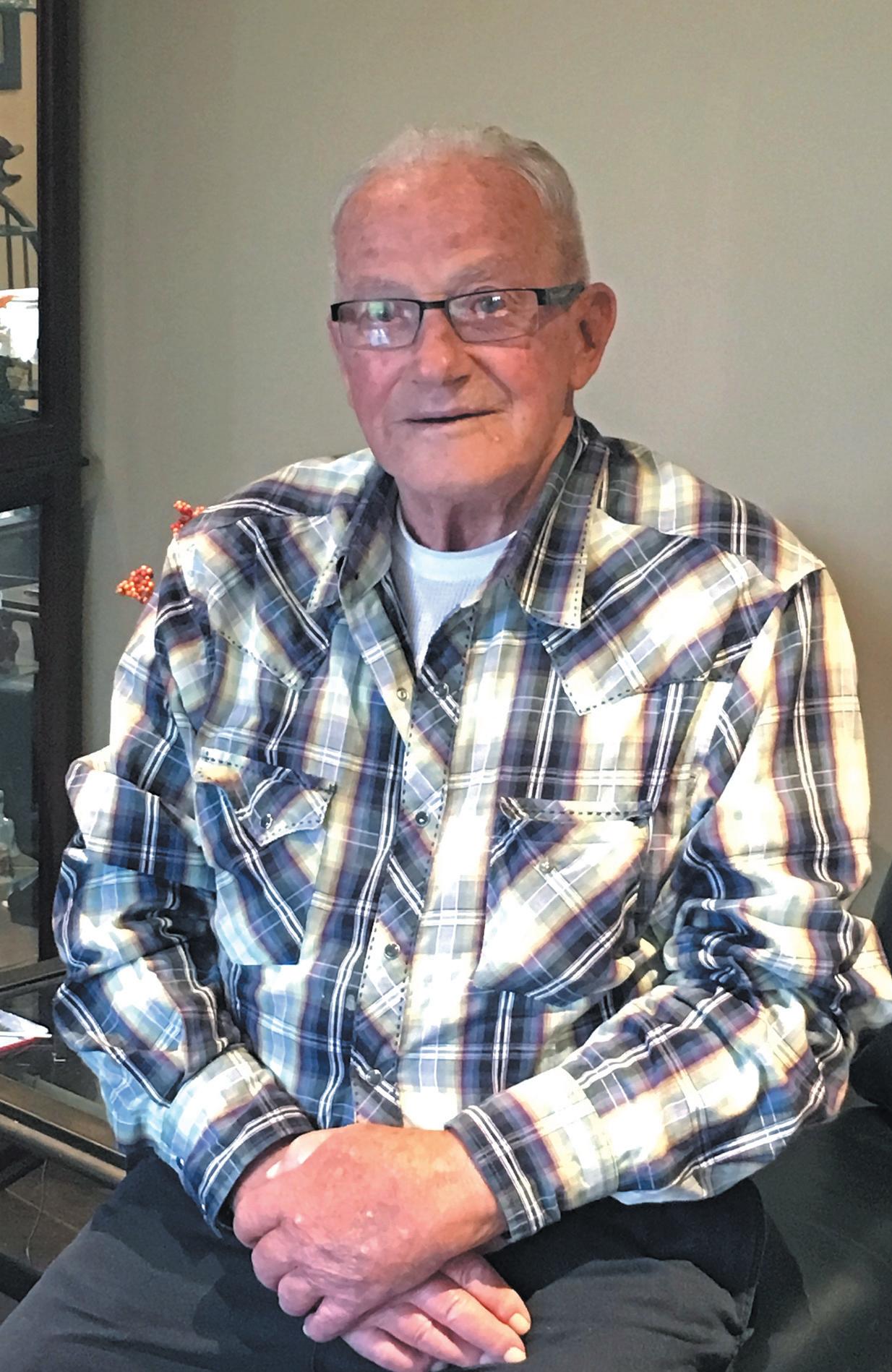
despite its name serves only Ontario, has been storing eye tissue since 1955, and is now affiliated with the non-profit communitybased organization Kensington Health. Other provinces operate their own eye banks. Humphreys said that like other tissues and organs from deceased donors, the demand for eye tissue lags supply: for instance, the average wait time for a cornea transplant in Ontario is 252 days – or
more than eight months.
Of the 12.4 million residents of the province who are eligible to become donors, just over four million have registered to donate their organs and other tissues. And of those, about 400,000 elected not to tick the box for eye tissue, representing the highest exclusion rate of all organs and tissues that can be donated after death. Humphreys admitted there are
Citizen news service
LONDON — The World Health Organization says a worrying number of the newest Ebola cases amid Congo’s ongoing outbreak are in patients not usually known to catch the disease: babies.
In an update published this week, the UN health agency reported 36 new confirmed cases of Ebola, including seven in newborn babies and infants younger than two years old. Six cases were reported in children aged between two and 17 and one case was in a pregnant woman.
While Ebola typically infects adults, as they are most likely to be exposed to the lethal virus, children have been known in
some instances to catch the disease when they act as caregivers.
Few cases of Ebola in babies have been reported, but experts suspect transmission might happen via breast milk or close contact with infected parents. Ebola is typically spread by infected bodily fluids.
WHO noted that health centres have been identified as a source of Ebola transmission, with injections of medications “a notable cause.”
WHO called Congo’s current epidemic “complex and challenging.” Congo’s health ministry says there are 346 confirmed cases, including 175 deaths, in what has become the worst Ebola outbreak in the country’s recorded history.
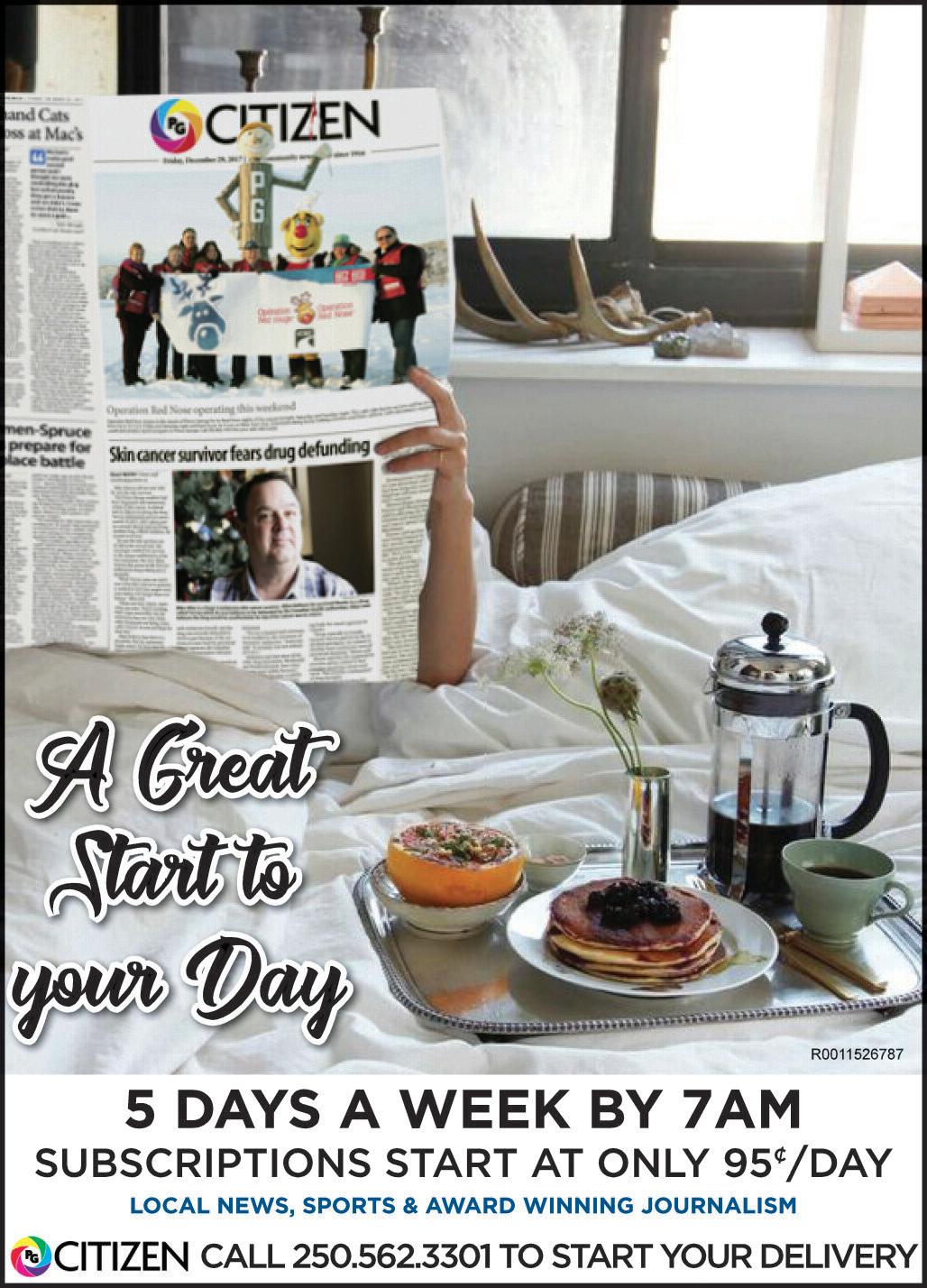
A lot of people don’t know we can recover just the corneas, leave behind the rest of the eye if they want.
— Christine Humphreys
barriers to people agreeing to donate their eye tissue, often for religious or cultural reasons, but sometimes because of common misconceptions about eligibility or the process.
“One reason we hear all the time is ‘I don’t see very well,’ ‘I’ve had eye surgery’ or ‘I’m too old’ or ‘I’ve had cancer,”’ she said. “And the fact is there are very few things that can result in not being a donor,” including having had a form of ocular surgery or cancer.
Some families worry that recovery of a loved one’s eye tissue would delay their funeral, which for religious reasons may need to be scheduled within 24 hours of death.
“But often we can meet that need, make the donation happen more quickly,” Humphreys said.
There can also be psychological barriers for some potential donors and their families, given such beliefs as the eyes being the “windows of the soul.”
“Some families, they have troubles with eyes for some reason,” conceded Humphreys.
“Some people think (their loved one) might be disfigured.
“A lot of people don’t know we can recover just the corneas, leave behind the rest of the eye if they want.”
As well, funeral homes can use prosthetics to obscure the fact that eye tissue has been removed.
“Obviously, if you’re looking to having a viewing or an open-casket funeral, the funeral home will work with the family to restore their normal appearance,” she said, noting that there is no cost
for the process to bank eye tissue and any extra fees charged by a funeral home are covered by the Eye Bank.
“A lot of people aren’t comfortable talking about death and what happens to us after dying. And I think if we normalize the discussion and we start to talk about it, a lot of (the discomfort) can be overcome by education.”
For Barbara Edwards, the decision to donate her father Dick Halverson’s eye tissue after he had a sudden fatal heart attack almost two years ago wasn’t difficult.
“We had talked about his wishes and he didn’t think he could donate – he thought he could donate, but not his eyes – because he had such thick glasses,” said Edwards, a hospital development co-ordinator at Trillium Gift of Life Network, Ontario’s organ and tissue donation and transplantation service.
“But when we heard from Trillium that that wasn’t true, that your vision didn’t affect your ability to donate, we knew right away it was yes... because we knew what he wanted.”
As it turned out, the 69-year-old wasn’t registered as a donor. He had planned to sign up on his next birthday, but died before, so his family made the decision.
“It was so special for us to be able to honour his legacy and be able to give the gift of sight to others,” Edwards said. “I didn’t realize how much after the fact that it would help in our grieving process, knowing that other people can be helped.”
Hallett, who retired in 2000 after selling his marina on a lake near his home, said his corneal transplant and subsequent cataract operation by a Toronto surgeon earlier this year has given him back his life.
“I’ve got good vision, very good. I can do anything I want,” he said, adding that he is so grateful to the anonymous donor that “I can’t even express what I feel.”
“I was totally grounded. It was a wonderful experience for me to get my sight back.”

When Theodore McCarrick resigned his title as a cardinal of the Catholic Church in July, the church made one promise as shock waves rippled through the pews: McCarrick would face a canonical trial, the Vatican’s version of a criminal inquiry, for the sexual misconduct he allegedly committed.
Four months later, McCarrick has moved from Washington, D.C.. where he was once the archbishop and then a prominent diplomat, to a remote friary in Kansas. Vatican leaders have said no to American bishops’ request that the Vatican conduct an investigation into the disgraced ex-cardinal’s behavior. When the U.S. bishops tried to vote last week on new rules regarding bishops, designed to prevent another McCarrick-type scandal, the Vatican issued a last-minute directive telling them to not even take a vote.
The question lingering on many Catholics’ minds remains: What’s going to happen to McCarrick?
The Vatican remains silent on the answer.
“What I hear from the people of God who I’ve been listening to... the Archbishop McCarrick case has particularly upset them,” Bishop Robert Deeley of Maine told his fellow bishops in an emotional remark last week at the U.S. bishops’ meeting in Baltimore, where numerous bishops raised demands for more investigation into McCarrick. “What the people don’t understand is, this behavior must have been known, because people are saying that it was known. And how did these promotions happen? I think that’s where the problem, a lack of trust, is. [Parishioners are asking] ‘Can we trust you?’”
McCarrick’s long rise through the ranks of the church, even as rumors swirled in certain circles that the cleric acted inappropriately toward seminarians and young priests, has indeed touched a nerve. Combined with a major grand jury report in Pennsylvania less than a month after McCarrick’s resignation - which recounted decades of abuse by hundreds of priests in the state - the scandal has set off a new wave of protests, not seen since the Boston Globe’s revelatory reporting in 2002, condemning the church’s handling of abuse at the highest levels. Last month, McCarrick’s succes-

sor as archbishop of Washington, Cardinal Donald Wuerl, retired early, faced with parishioners’ distrust that he truly didn’t know about McCarrick’s misconduct, as he claims, and that he mishandled abusive priests when he was bishop of Pittsburgh, as covered in the Pennsylvania report. The McCarrick scandal has even touched Pope Francis, after Archbishop Carlo Maria Viganò wrote in a furious letter that Francis knew about the allegations facing McCarrick and should resign. Francis has not specifically responded to Viganò’s claims, which are unproven but widely read.
When McCarrick was removed from ministry in June, the church said he had been credibly accused of molesting a minor when he was a priest in New York, nearly 50 years ago. By the time he resigned a month later, another man had come forward to say that McCarrick abused him as a youth too, starting when he was about 11 years old. And two New
Jersey dioceses where McCarrick previously worked admitted that they had settled two cases out of court involving McCarrick preying on young adult seminarians and priests, paying out $80,000 in one case and $100,000 in another.
The Archdiocese of New York investigated the first case and found the alleged victim’s accusation credible, leading to McCarrick’s removal. Ed Mechmann, the director of the Safe Environment Program for the archdiocese there, said the Vatican had assigned the same New York review board to investigate the second accusation. That investigation is ongoing and will eventually be turned over to the Vatican as well, Mechmann said.
Pat Noaker, a civil lawyer who represents both the accuser whose case led to McCarrick’s suspension and James Grein, the Northern Virginia man who says the ex-cardinal abused him starting around age 11, said he has heard inconsistent updates from various
This Sunday marks the end of the Christian year with Reign of Christ Sunday. Next week, Dec. 2, marks the start of advent and the season of preparation for remembering God’s incarnation and indwelling through the life and teachings of Jesus, yet as one season ends, what does it mean to say Jesus is King?
On the surface it seems pretty obvious. To say Jesus is King is to state that, at least for yourself, no one has any higher authority. If Jesus is King, there’s no room for anyone or anything else to occupy that space. You can’t say family is the most important, or kids, or job, or friends, or hockey. If Jesus is King, then everything else isn’t.
It also implies a certain kind of feudal relationship. Kings protected those within their kingdom. Kings provide access to safe roads and markets. Kings provide services and arbitrate disputes.
Kings raise armies to defend their kingdom or conquer others. Kings claim a right to taxation. Kings set the law of the land – at least that which is under their control. Does this fit what we mean when we say Jesus is king?
In John 18, Jesus is brought before Pilate who asks Jesus “are you the king of the Jews?” Jesus replies, “you say that I am” which doesn’t seem to suit Pilate. Behind Pilate’s question though is a legitimate concern as the governor representing a foreign power. What he’s really asking is, “are you a king who is going to raise an army and defend your people and take back what is yours with violence?” After all that’s what kings do when they’re threatened.
History has taught us that. Even the children’s game ‘king of the mountain’ taught us that. That’s why the concern is legitimate. Pilate needed to know if he needed to summon the army from their camp outside the walls. Did he need to send a dispatch to Rome? Did he need reinforcements? Was his personal safety at risk – was this just a ploy for Jesus to get close to him?
We know that’s not the kind of king Jesus would claim to be. Rather Jesus was a servant king. Rather than defending the rights of the powerful and elite, he’d be walking in the migrant caravan making sure that people’s needs were being looked after, that they were safe, fed, and clothed. Jesus would be facilitating a conversation about homelessness and the prevalence of drug abuse in our society. Jesus would be hosting an open table, one without walls or boundaries of doctrine or conformity, and saying, “come, eat.” The
church officials about the status of the first case in Rome. “I have absolutely no confidence these men will receive justice from the Vatican. They protect their bishops and cardinals like princes, like the Saudis protect theirs,” Noaker said. The Vatican has declined to answer questions, including those from The Washington Post this week, about the state of an eventual trial in Rome for McCarrick.
But some church watchers believe the Vatican is waiting until Grein’s case makes its way to Rome. It’s an easier case - because the victim was younger when the abuse started. According to Noaker, the other victim was 16 years old when McCarrick first put his hand in the teen’s pants while preparing for a Christmas service.
Until the 1980s, Catholic commentator Ed Condon said, the church’s definition of sexual abuse of a minor only covered people under 16 years old. The age was raised to 18.
“Under the operative law at the time of the accusation, it wasn’t a minor. If you pass a law, you change the provisions of a penal law; you can’t impose them retroactively,” said Condon, who trained as a canon lawyer - meaning he can practice in the Vatican’s own legal system.
Avoiding any sexual liaisons - with adults or children, consensual or not - is an obligation of priests under canon law, but simply having a sexual encounter with a person age 16 or older was not necessarily considered a crime under canon law at the time, Condon said: “Which isn’t to say there isn’t sexual behavior that could result in a criminal process, but it’s not spelled out.” If McCarrick were charged with a crime for molesting the teenager before the Christmas service or for harassing adults in New Jersey, Condon said, it might fall under categories such as “damage to the good of souls” and “public scandal.”
“The difficulty they’re working with at the moment is trying to find a way of applying the law as it’s been applied for the last 20, 30 years, while representing the gravity of the McCarrick situation,” Condon said.
That might mean the Vatican will simply wait to put McCarrick on trial until they can try him on the case of the younger victim, a more straightforward process. And that case might be slow in reaching Rome. McCarrick’s canon lawyer - who, like his civil lawyer, has declined requests for comment from The Post - could slow down the process, Condon said, by requesting time to produce evidence such as travel records that might show McCarrick was not in the same location as the victim at the alleged times of the assaults. If found guilty of sexual abuse of a minor, Condon said, McCarrick could face being laicized - meaning he would lose all status as a member of the Catholic clergy and would lose his church housing in Kansas.
At the moment, he remains in the friary. Francis has ordered him to a life of prayer and penance from the very day he resigned from the College of Cardinals. Prayer and penance is typically a punishment imposed on a person convicted in a canonical trial, not a pretrial condition. So while McCarrick has not been convicted, in some sense, the Vatican is treating him as if he has already been sentenced.
servant king would be calling us to move away from our own comforts and into relationship. And right there, that’s the rub. That’s the threat. A typical king that uses violence, coercion, and manipulation – that kind of king Pilate knew how to deal with. That kind of king we know how to deal with, but Jesus is a servant king and this kind of extreme reversal of expectations often leaves us more dumfounded than comforted; more frustrated than understood; more angry than at peace. Partly that’s because the servant king doesn’t just challenge the systems, concepts, and things we don’t like. The servant king challenges us. To profess Jesus as king is a culturally subservice proclamation, it was then, and it still is now, because the statement actually isn’t about us having our needs met. It’s about us saying we follow that king away from the stereotype of being served and into the mystery
of God who serves. To claim Jesus as king isn’t about what you’re getting. It’s actually about what you’re willing to give up. Christ the king isn’t something to be taken lightly because it is a statement about a very specific worldview and a desire for a particular kind of world order – one where the king washes the feet of his followers, where the one lost sheep is more important that the nine, where the other cheek is always offered, where everyone is fed, and a child can lead. When we say Christ is king, it isn’t about us. It’s actually a statement about others and what we’re prepared to do as followers of the servant king. Maybe that’s why early Christians were so aware and careful about where they said it and how they said it.
May the approaching advent season and Christmas celebrations help all of us reflect on how Christ can be king and what that could mean for our world.


OTTAWA (CP) — These are indicative wholesale rates for foreign currency provided by the Bank of Canada on Friday. Quotations in Canadian funds.
Thomas HEATH Citizen news service
When I think about entrepreneurs and Harvard, I think about Mark Zuckerberg and his Facebook mob, who started their little dorm project for kicks and turned it into something that’s worth more than a small country.
Pete Davis and Jon Staff aren’t the Facebook guys.
Davis and Staff are the antiFacebook guys.
They built a back-to-nature “tiny house” business called Getaway that’s all about locking up the iPhone (literally), heading into the woods, communing with black bears and (if that does it for you) decompressing.
“It’s supposed to be about doing nothing,” Davis said. There is no WiFi. And cell coverage is spotty at their hotel rooms in the woods.
Sounds kind of granola, I know. But Getaway is grossing more than $1 million a year, and the guys are cash-flow positive.
TORONTO (CP) — A sharp plunge in oil prices Friday cascaded across the energy sector and into the wider market to push North American indexes into the red. The drop of US$4.21 or 8.3 per cent in the crude price to US$50.42 –its lowest level in over a year – came after Saudi Arabia said Friday it had hit record production. The Saudi announcement added to fears in the energy market after U.S. crude inventories rose earlier this week and indications out of Europe and elsewhere pointed to a potential slowing of global growth.
“All three of these have weighed quite dramatically on crude oil prices this week,” said Candice Bangsund, portfolio manager for Fiera Capital.
“The entire week we’ve had a lot of investor concerns regarding a renewed global supply glut in the marketplace, whether it’s Wednesday’s increase in U.S. stockpiles, which rose for the ninth consecutive week, as well as obviously ongoing concerns about global demand.”
The fall in crude prices weighed on markets in general, said Bangsund.
“That’s spilled over into the entire marketplace, so not just the energy space, but the commodity space in general, and it’s really just stoked a risk-off sentiment in the marketplace.”
The S&P/TSX composite index closed down 80.85 points at 15,010.73, led by a 4.7 per cent drop in the energy index. The composite index traded as low as 14,900.32 on the day with about 155 million shares traded. On a shortened trading day in New York, the Dow Jones industrial average closed down 178.74 points at 24,285.95. The S&P 500 index closed down 17.37 points at 2,6432.56, while the Nasdaq composite closed down 33.27 points at 6,938.98.
“From a technical standpoint, there’s just a lot of negativity, and investor nervousness, or markets are nervous about the crude markets and prices,” said Bangsund.
The Canadian dollar averaged 75.60 cents US, down 0.13 of a US cent from Thursday.
The loonie fell as the U.S. dollar got a boost as a safehaven, while lower energy prices outweighed positive data out of Statistics Canada, said Bangsund.
“The economic data out of Canada this morning was actually quite positive and exceeded expectations, both on retail sales and on the inflation front.”
Last year, they persuaded a venture capital fund specializing in quality-of-life companies called L Catterton to plow $15 million into the Davis & Staff idea of how to tune out the noise and lower your blood pressure.
They have more than 30 employees, and brag that they design and manufacture more tiny houses than just about anybody in the United States. I didn’t even know there was such a statistic.
“We want Getaway to be the opposite of Silicon Valley,” Davis said. “Silicon Valley sells you more connection and more distraction. We want Getaway to be about disconnection, deep conversation, a real-life recharge.”
This from a pair of Harvard guys. Davis graduated from Harvard Law and Staff from Harvard Business School.
Hardly a pair of slow-mo “I gotta get my head on straight” dudes.
“I am a normy guy,” Davis said.
Getaway is based in Brooklyn, but Davis is from Northern Virginia, and one of Getaway’s outposts is less than two hours southwest of the District of Columbia in Stanardsville, Va., near Shenandoah National Park.
The “tiny houses,” or cabins, measure eight by 20 feet, or about the size of a living room. They cost about $30,000 each to build and are shuttled on truck beds from a factory in Massachusetts to their destination.
McMansions they ain’t. In fact, these two are the anti-McMansion crowd, too.
They cluster the tiny houses in groups of 20 or so on leased woodland, just outside major cities.
Each outpost has a long-term lease on private land. Cabins are spaced 200 feet from one another, allowing sufficient privacy. And you can drive right up to the door.
To date, Getaway has 80 tiny houses planted outside Boston, New York and Washington. Los Angeles is next.
“Far enough to feel like it’s a getaway,” Davis said, “but close enough so you can get there for a weekend.”
The occupancy rate is 90 percent, and that includes weeknights and winters. The biggest chunk of customers are younger than 40, most of whom are couples and small groups.
It isn’t the spa at a Four Seasons, but it’s not Parris Island, either.
Each cabin has a name, a fire pit and Adirondack chairs outside, if you want to relive your childhood and toast s’mores.
For $100 to $200 a night, you get running water, a shower, a stove, a small fridge, a clean bed, a toilet and a big window, where you and your whatever – dog, partner, husband, wife or chum –

can chill. The cabins are cleaned up between guest stays, one of which lasted two weeks. Access to each tiny house is through a punch code that guests receive online.
Davis said the idea is a “miniretreat,” with less stuff and more life experience.
“People are discovering that they’re tired of more stuff and more thrills,” Davis said. “Sitting among our stuff in the moments between our thrills, what do we miss? We miss those good, old intangibles: deep connection. Quality time. Space to think.”
Getaway’s “thing” or “gimmick” that sums up the connection message is a latched box in every cabin in which you can put away the temptation to tweet, text, read onlilne or work on your Sudoku.
“We’ve tried to bake the philosophy of Getaway into the cabins with the cellphone,” Davis said.
Getaway even has a book coming out next year on the founders’ philosophy of disconnecting from the day-to-day. Davis, 29, met Staff, 30, in college.
Both are what Davis calls “project people” and are into creating offbeat companies: “We’ve always been the type to focus less on grades and more on projects.”
(That reminds me of the line from the film The Social Network, when then-Harvard President Larry Summers tells entrepreneur twins Cameron and Tyler Winklevoss that “everyone at Harvard is inventing something or starting a new business in their dorm room.
Harvard undergraduates believe that inventing a job is better than getting one.”
Staff, who grew up in a “tiny” town in Minnesota, started a frozen yogurt shop called Spun and a (get this) breathable foods company that drew a chuckle from Staff when he told me about it.
Davis started a mini-Facebook for neighbours and towns called Commonplace that fizzled out.
They share a love for community, neighborliness and a skepticism toward social media.
They also share “old-fashioned values” that were affirmed with a course they took from Robert Putnam, who authored Bowling Alone: The Collapse and Revival of American Community.
“The way we first hit it off in our dorm was less about apps solving problems and more about old-time
virtues, like having neighbours, having long conversations and meeting people in the real world,” said Davis, who concentrates on the marketing side of the company; while chief executive Staff focuses on finance and operations.
“Quality time instead of just packing everything into time.”
They came up with the idea of tiny houses in the woods as a way to put the spirit of their backto-nature vibe into something concrete that wouldn’t cost them a ton.
To build the homes, they blitzed Harvard’s email lists in search of architecture students who might want to join them.
Davis and Staff picked two students from dozens of responses.
They used their digital smarts and found a spot of New Hampshire woodland on Craigslist. They built their first tiny house out of pine in an East Boston warehouse and plopped it down in New Hampshire in summer 2015.
There’s more going on at Getaway than making s’mores and chasing away bears.
It’s the scene of big-deal life stuff: “People have gotten engaged at Getaway. Multiple babies have been conceived at Getaways. Multiple people have reported coming to Getaway after chemotherapy, deaths in the family, after taking big tests and right before being deployed.”
Davis and Staff have big ambitions. They want a Getaway outpost outside every big U.S. city and maybe even overseas.
Davis said he and Staff use Getaway themselves to chill out. Of course, whenever they go, they end up with higher stress levels, because all they do is sit around discussing how to improve the experience.
“We have a different experience than our customers do,” Davis said.
“Sadly, we ourselves have to get away from Getaway.”

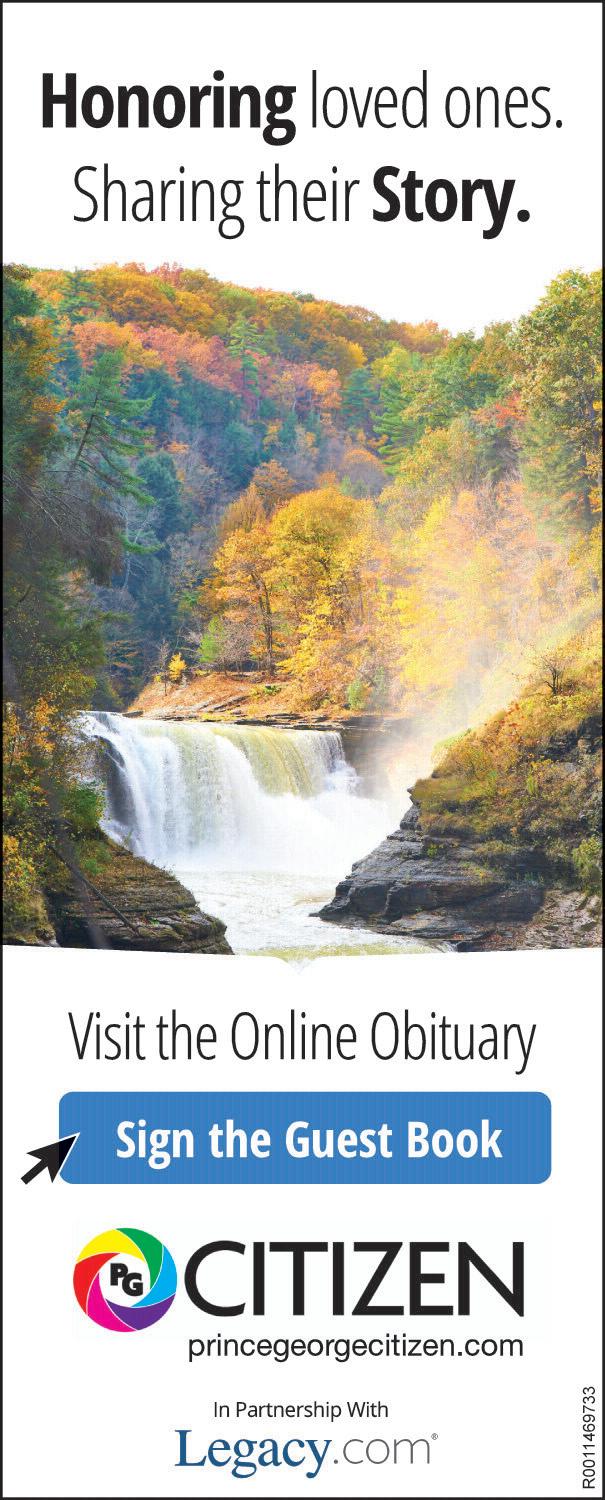
These days, data breaches that expose personal information seem to happen so often that consumers have come to expect such failures.
“There is data fatigue,” said Terry Ray, chief technology officer for Imperva, a data security firm. When a company announces a security breach, “it almost doesn’t even hit the stock anymore,” he said, and many consumers brush it off and keep shopping or doing business with the company.
But people may be less blasé about the idea that their personal data has been put at risk by their employers, who consumers have entrusted with not only their names and addresses but their Social Security numbers, W-2 forms, bank accounts for direct deposits and even biometric data like finger prints.
“People don’t expect that their employer is going to lose data,” said Risa Boerner, who leads the data security and workplace privacy group at the law firm Fisher Phillips. “They feel more betrayed and upset if it’s their employer.”
Yet the exposure of employee data happens more often than people may realize, say employment lawyers and data security experts. For instance, the Seattle Times reported Nov. 9 that Nordstrom had alerted employees last week of a security breach that exposed data such as their names, Social Security numbers, salaries and checking account numbers.
The company’s co-president, Blake Nordstrom, sent a memo and apology to employees, according to the newspaper, saying the company was “investigating an incident where a contract worker improperly handled some Nordstrom employee data,” saying “we have no evidence data was shared

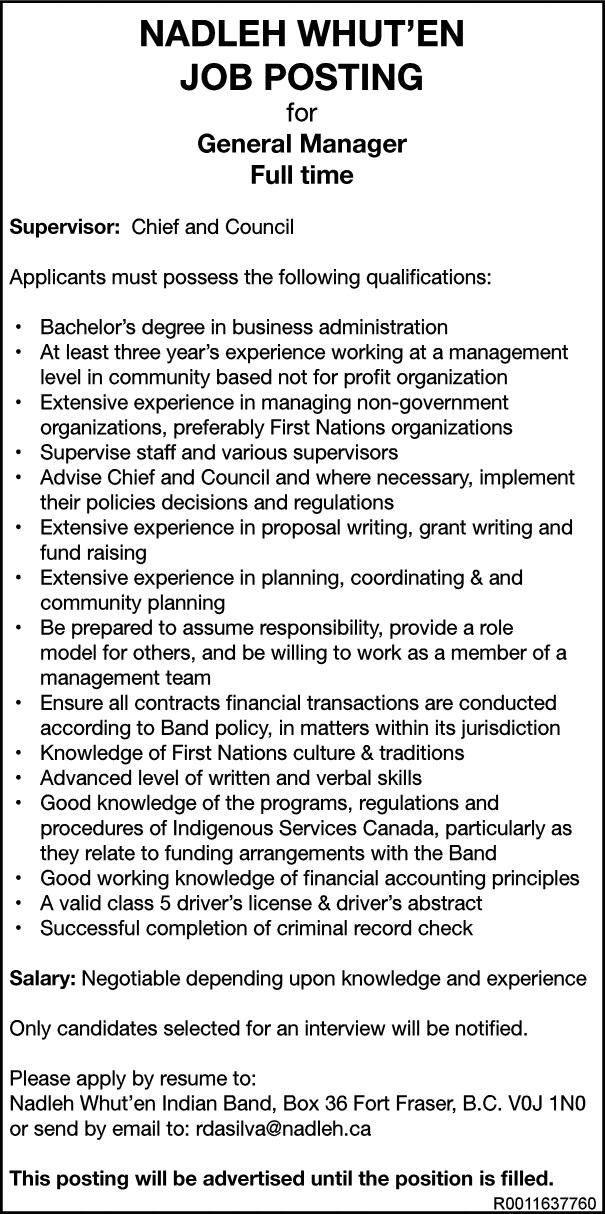

or used inappropriately.”
The report did not say the data was lost, only that Nordstrom was notifying workers “out of an abundance of caution,” and noted that consumer data was not affected. (In an e-mail, Nordstrom spokeswoman Emily Sterken said the company didn’t have anything additional to share beyond the Seattle Times report. “Right now, our focus is on taking care of our employees.”)
The exposure of consumer data often gets much more attention because of the vastly higher number of people affected, which can drive media coverage when authorities are notified. But lawyers who represent employers say companies may also be less likely to publicize when employees’ data is exposed for several reasons.
For one, when data is exposed, states typically require that individuals be notified. Because companies don’t always have a way to notify all the consumers who could have been affected by a breach, they may post information on their web site and alert the media, in addition to reaching out to individuals and regulators, to meet their notice requirements, said Joseph Lazzarotti, who co-leads the privacy and data security practice for the law firm Jackson Lewis.
“But with employees, you’re not going to have that problem,” he said, as companies typically know how to reach their employees, and can notify them without making more public announcements.
They may also be concerned about the reputation hit of a potential breach. Even if employees are unlikely to quit a company the same way consumers can – making a choice to shop elsewhere after a security problem – “it’s not like there’s no negative consequences,” Boerner said. “It’s bad publicity, and it can be bad for the relationship with your workforce.”
Yet there are also more ways that employees’ data can be at risk than there are for consumer data. “Unlike credit cards, where you might have one or two core locations where that data is stored and monitored, employee data is all over the place,” Ray, of Imperva, said. And even if many companies consider employee data protection important, they may prioritize the monitoring of
data that’s regulated or that makes the biggest difference to the bottom line.
“Where does employee data fall in that list of priorities?” he said “I will say it’s almost never at the top of that list.”
Besides a pure security breach by an external hacker, there is also the risk that an employee’s laptop with worker data might be lost or stolen, or that a disgruntled employee could take data and publish it, as one worker did for 100,000 of his colleagues at the British supermarket chain Morrisons. The company recently failed to overturn a British court decision saying it would need to compensate thousands of workers after a rogue colleague posted info like bank account details and birth dates online, the Financial Times reported. Such disgruntled worker breaches are rare, however. A more common risk occurs because many companies outsource much of their human resources data to outside firms, such as payroll vendors, benefits administrators or other thirdparty providers.
“This can be a serious, serious problem,” Boerner said. “You can do everything in terms of training your employee, but if you’re handing it to a third party and they’re not setting the same standard as you, you’re putting that data at risk.”
Perhaps the biggest risk for employee data is through “phishing” scams, in which an employee might get an email from a cybercriminal posing as a vendor asking for login information or impersonating a senior executive asking to see employees’ W-2s. In January, the IRS issued a notice saying complaints it had received about the W-2 scam – which it says criminals use to file fraudulent tax returns or sell on the dark net – had jumped from 100 in 2016 to 900 in 2017. More than 200 employers were victimized in 2017, the IRS notice also said.
Lawyers say that the ability of employees to seek recourse depends on a number of factors, from the state they live in, to how the employer handled the incident, to whether they are able to show they suffered damages from the exposure. There have been some classaction settlements awarded to employees hit by the W-2 phishing scam.

The safety of employee data is likely to become more of a focus for companies after Europe’s General Data Protection Regulation came into force this year, some lawyers said – the hefty fines and extra precautions large corporations face for their European employees and consumers could carry over to improved scrutiny for their U.S. counterparts. At global companies, Boerner said, “your employer is being more mindful because they have to do it to comply” with Europe’s laws now.
Some states, meanwhile, have expanded laws to include the coverage of biometric data, such as fingerprints or facial scans, under data privacy laws.
Some workers rights advocates are concerned employers could over-collect data like finger prints or facial scans. Lewis Maltby, president of the National Work Rights Institute, suggests “employers should only use that level of security where they really need it, such as getting into a bank vault,” he said. If hackers were to access biometric data, he said, the results could be “devastating. You can get a new bank account or Social Security number, even if it’s hard. You can’t get new fingerprints.”
Many companies are training workers to spot phishing emails by planting fakes, with some even running contests to see which corporate teams can avoid clicking on them the most, awarding the winning groups prizes such as extra paid time off, said John Litchfield, a lawyer with Foley & Gardner in Chicago. “I think the weakest link (for employee data) is these phishing scams, which are becoming much more sophisticated,” he said. “It’s harder and harder for people to recognize them.”
Ray said Nordstrom made the right moves after the exposure was discovered – identifying it, taking action, informing people quickly and then putting some kind of remediation in place. Affected Nordstrom employees will reportedly receive two years of identity protection services, something Ray said companies don’t always offer unless it’s clear that a breach, and not just a potential one, has already occurred.
“That actually goes further to build trust in employees,” he said.
Q: We have a fairly small staff in an open office space (no cubicles).
There’s a woman on our team whom I find annoying. I always have to remind her to silence her cellphone. She’s also a crabby person. When I said something to her she didn’t like, instead of discussing it with me, she went over my head. I have learned she tells our boss who’s in on time. She gets in early and can see whether our arrival time matches our posted schedule. It stresses me out to think that if I come in late, which is rare, I’ll be on her list.
Overall, I minimize my interactions with her. But I find her snitching bad for morale. Should I bring it up with my boss, or just keep avoiding her?
A: If you work in an environment where it doesn’t matter what hours you keep as long as the work gets done, ignoring the timetattler will probably do no harm. If you’re in a workplace where punctuality is paramount, complaining about her will probably do no good.

The fact that you have posted schedules and are stressed about being on her “list” suggests you’re in the latter kind of workplace. If being tardy means leaving customers or colleagues in the lurch, or fudging billable hours, you can’t really argue that it’s no one’s business if you slide in a few minutes late. More to the point, does your boss simply humour her snitching – or encourage it? Snitches are only as dangerous as their audience is receptive.
Either way, the best way to shield yourself is to not let her be your primary point of contact with the boss. If you’re usually on time and reliable, and you have a good relationship with your boss, the snitch will become irrelevant. You can even beat her at her own game by giving the boss a heads-up when you’re running late. Ideally, your boss will either appreciate your conscientious attitude, or will confidentially tell you not to worry about it. Reasonable bosses understand that sometimes cars break down, kids can’t find their shoes, buses run behind schedule.
Of course, if you’re having to make those calls on more than the “rare” occasion, it might prompt you to reexamine your commuting habits.
Or if it turns out your boss is not the reasonable sort, you might want to reexamine whether your employment situation suits you. Incidentally, Crabby Patty may indeed be awful.
But from the way you sort of gloss over your constant reminders about her cellphone and whatever you said that she “didn’t like,” I have to wonder if the annoyance is mutual.
Maybe her crabbiness, schedule obsession and subversive communication style are products of anxiety, rather than malice. Or maybe this whole situation is yet another piece of evidence that installing workers in an open-plan office builds camaraderie about as well as herding rats into an openplan cage.
– Karla L. Miller offers weekly advice on workplace dramas and traumas.

Citizen new service
On a stage in a conference hall in central Pennsylvania, at least 14,000 years after humans domesticated wolves into dogs, Milena Kon was turning a dog into a gazelle. And an elephant. And a lion. And a giraffe.
This evolution, taking place during one of the nation’s highest-profile dog grooming competitions, involved strategically dying the white fur of a poodle named Soleil to the hues of African animals, sculpting her hair into horns and tusks, airbrushing elephant toenails to her back legs and attaching googly eyes to her rear end.
“Anything artistic is what I’m drawn to,” Kon, a graphic designer-turned-dog groomer from New Jersey, said before the event. “And I love dogs. They’re my passion. They’re my weakness.”
This “creative grooming” contest was the crowning event of the nation’s largest dog-grooming trade show, Groom Expo. But the action was just as buzzy beyond the stage, in hundreds of booths selling polka-dot barrettes and bubblicious dog cologne and in dozens of seminars with titles including “Thinning Shears ... the Wow Factor!” Amid it all, thousands of groomers were buying specialized gear, networking and commiserating about long client waiting lists in a field that these days counts all dogs - not just poodles, the traditional canine topiaries - as canvases worthy of transformation.
All had some part in a $6.5 billion pet services industry that has doubled over the past decade, fueled by the rapid rise of what marketers call the “humanization” of pets. When it comes to dogs, that has meant a migration not only from the backyard into the house, but also into the bed and the car, where they’re often treated as nicely – and expected to smell as nicely – as the rest of the family.
Groomers have responded. When the expo debuted here 30 years ago, 350 showed up. This year, nearly 5,600 came.
“The biggest factor of all is that so many people consider their dogs to be children,” said Todd Shelly, president of Barkleigh Productions, which hosts several dogrelated trade shows and publishes Groomer to Groomer magazine, which would feature the creative contest’s winner on its cover. Mercedes-Benz and other prominent companies are increasingly advertising in the publication, he said, because they’ve come to view groomers as “influencers” – people who have the ears of a dog-loving nation.
And while there’s much overlap between the grooming world and the show dog world, Shelly said, more and more groomers are devoted to what is arguably the vanguard in American dogdomthe rescue dog.
“I had dogs growing up. I think we just hosed them off in the backyard,” said Corina Stammworthy, who not long ago was a biotechnology graduate student preparing for a career in research. Instead, she opened a self-service dog-bathing shop that later added grooming and now she employs 14 people.
Her customers represent a wide socioeconomic range, she said, and their pets are anything from mutts that come in weekly to show dogs. “We’re finding more and more the line’s being blurred,” she said. That is also happening at Groom Expo. Stammworthy was standing in a parking garage that served as a bathing area for the dogs in the expo’s various competitions, which at this moment were shelter


dogs. Now in its fifth year, the rescue-only event pairs homeless dogs with groomers, who have two-and-a-half hours to give them makeovers that, the idea goes, will increase their chance of being adopted. Contestants are judged not just on the cuts, but also on their handling of dogs that might never have seen clippers before.
In a stainless tub next to a mound of wet towels was a bewil-
dered chow mix named Brownie. He was being lathered by the gentle hands of Miranda Kalonarou, a groomer from the Astoria neighborhood in Queens and the winner of the rescue contest last year. She was using the provided shampoo, though it was not ideal. “It does matter,” she said, but given the time limit, she opted against lugging her own products to the garage. “A good cut starts
with a good bath. And he’s filthy.”
On stage after the bath, Kalonarou trimmed Brownie to a shinier and sleeker version, then finished him off with a bow tie. Next to her, another contestant pampered Mr. Lily, a little white dog with Yodalike ears and the sort of misaligned underbite that could make him an Instagram star. (His groomer took second place, winning $1,500.)
Out in the exhibition area, at
least a dozen booths were selling shears that all looked similar to a layperson, but which their representatives assured were not. On one side of a hallway, a salesman extolled the virtues of an “effortless” pair of scissors that “does most of the work.” On the other side, Bob Edman, a towering former machinist, stood confidently over a shiny array of his own, Aussie Dog Shears.
They are the best product for the price, he said. He goes to all the expos, and lately, he said, he’d been wowing people with his new “phenomenon,” a copper comb that he says has antibacterial properties, among other advantages. Edman said he was certain he’d sell all his stock, though he insisted money is not why he makes dog scissors.
He does it for the groomers, he said, who are “not phonies,” but are generally just good people. Few ordinary dog owners want rainbow hues, groomers said. Even so, hundreds of people came to watch the creative grooming spectacle on the last day of the expo.
A dozen groomers were in the running. All their dogs were poodles, which is typical, said Emily Myatt, a grooming school owner who flew from her home country of Australia to judge the competition.
“You want a dog that likes to be shown off, and poodles are those types of dogs,” Myatt said. “They like to strut their stuff. They’re very prancy.”
Unlike other competitions, where all the grooming takes place during the event, creative groomers’ dogs can arrive with pre-dyed fur. Before the contest, the colorsplotched pooches resemble afghans – the blankets, not the dogs.
The sculpting and finishing happens on stage. More dye is airbrushed on. Bling can be added but nothing that restricts movement, Myatt said. Hot glue guns are not allowed. Dye must be nontoxic.
The best have perfectly precise color lines, no loose hairs, and creative themes that don’t require too much effort to understand, she said. Creative groomers insist the dogs do not mind the garish results and that they even enjoy it.
“They see the attention that they get, and that’s what I think they like,” said Kon, who owns two mobile grooming vans that she said serve many young couples who view their dogs as kids. Kon took up creative grooming four years ago, and now she owns 10 poodles.
“I have a big backyard,” she said. In past years, Kon has done Finding Dory and Wonder Woman themes. This year’s African safari idea was inspired by Soleil, she said, whose petite stature reminded her of a gazelle.
“When I show people my pictures, they’re like, ‘No, that’s not a dog,’” Kon said. “And I’m like, ‘Yes!’” Other themes this year: the horror film It; a farm tableau complete with John Deere tractor; and two Game of Thrones dogs, one of whose owner explained to the audience that she was tired of waiting for a new season, “so I decided to go ahead and decorate my dog as the show.”
Kon, who’d won several contests earlier this year, didn’t place, though she came close to snagging the people’s choice award.
The victor was a groomer who used her poodle’s fur to create the characters of the 1980s cartoon
The Wuzzles, which most people, including Myatt, had not heard of. It didn’t matter: The detail was what counted.
Go ’80s! the winning groomer shouted, to an audience and industry planted firmly in the present.

Julian
KIMBLE Citizen news service
Rocky Balboa has long been canonized in popular culture as the physical embodiment of Philadelphia, a city known for blue-collar underdogs with chips on their shoulders. The Creed spinoffs bestowed Philly’s underdog crown upon a new name: Adonis Creed (nee Johnson), played by Michael B. Jordan – the illegitimate son of Rocky’s late foe turned friend, Apollo Creed, and an adopted son of the city.
In Creed II, released Wednesday, Adonis returns to his hometown of Los Angeles and trains to fight the hulking Viktor Drago, the son of his father’s killer, Ivan Drago, in Moscow. The movie maintains the connection to Philly’s against-theodds determination, but it comes at a time when the context has changed.
The typical perception of Philadelphia is rather distinct. The city’s fan base, known for obnoxiously supporting teams that rarely win championships, is widely regarded as the absolute worst in sports. In the Rocky and Creed movies, fans have seen hardship and triumph depicted through adored sports film tropes, all while the actual city’s sports
teams failed to find the same continuous success.
No longer is Philly known for lazy identifiers such as cheesesteaks, volatile fans and “the Rocky steps.” It’s actually getting recognition for something else: The city finds itself at the forefront of popular culture for winning, not losing.
Rapper Meek Mill has become an unlikely avatar for prison reform. The Philadelphia 76ers’ polarizing long game for success yielded the team’s first playoff appearance in six seasons.
And Creed II was filmed against the backdrop of the Philadelphia Eagles winning Super Bowl LII, their first championship of the NFL’s post-merger era. Such pride hadn’t been felt since the Philadelphia Phillies won the World Series in 2008.
“I was there in the city when it happened,” says Creed II director Steven Caple Jr., who arrived in January to prepare for filming. “I was literally on 15th and Sansom, and Broad (Street) was maybe one street over, and it was crazy. I had to check it out, just to catch the energy.”
For Meek Mill, who titled his 2017 album Wins & Losses, the start of 2018 almost certainly felt like the latter. He began the year


behind bars after being sentenced to two to four years in November 2017 for violating the conditions of his probation. His case, which stemmed from a decade-old conviction for gun and drug charges, drew national attention, including criticism of how black men and women are disproportionately affected by the criminal justice system.
Creed II was filmed against the backdrop of the Philadelphia Eagles winning Super Bowl LII
Although fame couldn’t keep Meek Mill out of prison, his profile elevated his case. He was released on bail in April after Pennsylvania Gov. Tom Wolf and Philadelphia District Attorney Larry Krasner questioned the credibility of the rapper’s arresting officer. Since his release, Meek has become a national advocate for criminal justice reform. “When he has done interviews
with national TV shows and even news conferences with the governor, he’s mentioned, ‘Hey, I know I’m lucky, and I’m just an example of what so many others are dealing with,” says Alex Holley, co-host of Fox 29’s Good Day Philadelphia.
Now Meek is slated to release his fourth album, the aptly titled Championships, on Nov. 30. And let the Eagles tell it: Meek Mill was a source of inspiration during their championship run. The team adopted his Dreams and Nightmares (Intro) as their theme song. The Eagles’ championship hopes had begun to fade after quarterback Carson Wentz, an MVP candidate, suffered a season-ending knee injury last December. Enter backup Nick Foles, who, against all odds, led the Eagles to the

Super Bowl. They defeated the defending champion New England Patriots, snatching the Lombardi Trophy that had eluded them for more than 50 years, and Foles was named Super Bowl MVP. The Super Bowl victory marked what seemed like an immediate change of culture for the franchise and the city. “It’s a lot easier, and a lot more fun, for people to associate themselves with the Super Bowl champion,” says Spike Eskin, program director for WIP-FM Philadelphia.
That winning attitude extended to the 76ers. After years of setbacks and being strategically terrible to draft the best available players, the 76ers concluded the 2017-18 season on a 16-game winning streak.
They won their first playoff series in six years and, with the addition of four-time all-star Jimmy Butler, are considered a contender in the NBA’s Eastern Conference. (Meek Mill was transported directly from prison to the Wells Fargo Center to ring a replica of the Liberty Bell before a playoff game.
As with the Eagles, the gesture was criticized for conflating Meek’s release from prison with a sports team’s ambition.)
Just three years ago, the Sixers were the worst team in the NBA. Now they’re among the new faces for success in the league. Meanwhile, the Creed franchise has given the old Rocky story a new star (a white, working class hero didn’t reflect the diversity of the city), while still maintaining the narrative’s tropes: In the latest installment, Adonis appears overmatched once again and must come to terms with the circumstances surrounding his father’s death, and the legacy he left behind.
“I didn’t want to discontinue the underdog story,” Caple, Jr. says. “So a lot of it tapped into (Adonis’) vulnerability as a character, his flaws and his growth.”
And the reason people gravitate toward that vulnerability is because they enjoy feel-good stories. The tales of Meek Mill, the Eagles and the 76ers and the intertwined stories of Rocky Balboa and Adonis Creed allow the masses to romanticize what it’s like to overcome hardships and win.
As Gene Demby, a Philadelphia native and the co-host and lead blogger for NPR’s Code Switch podcast and blog, put it: “Beating the odds is a great story, but the odds are also part of the story.”
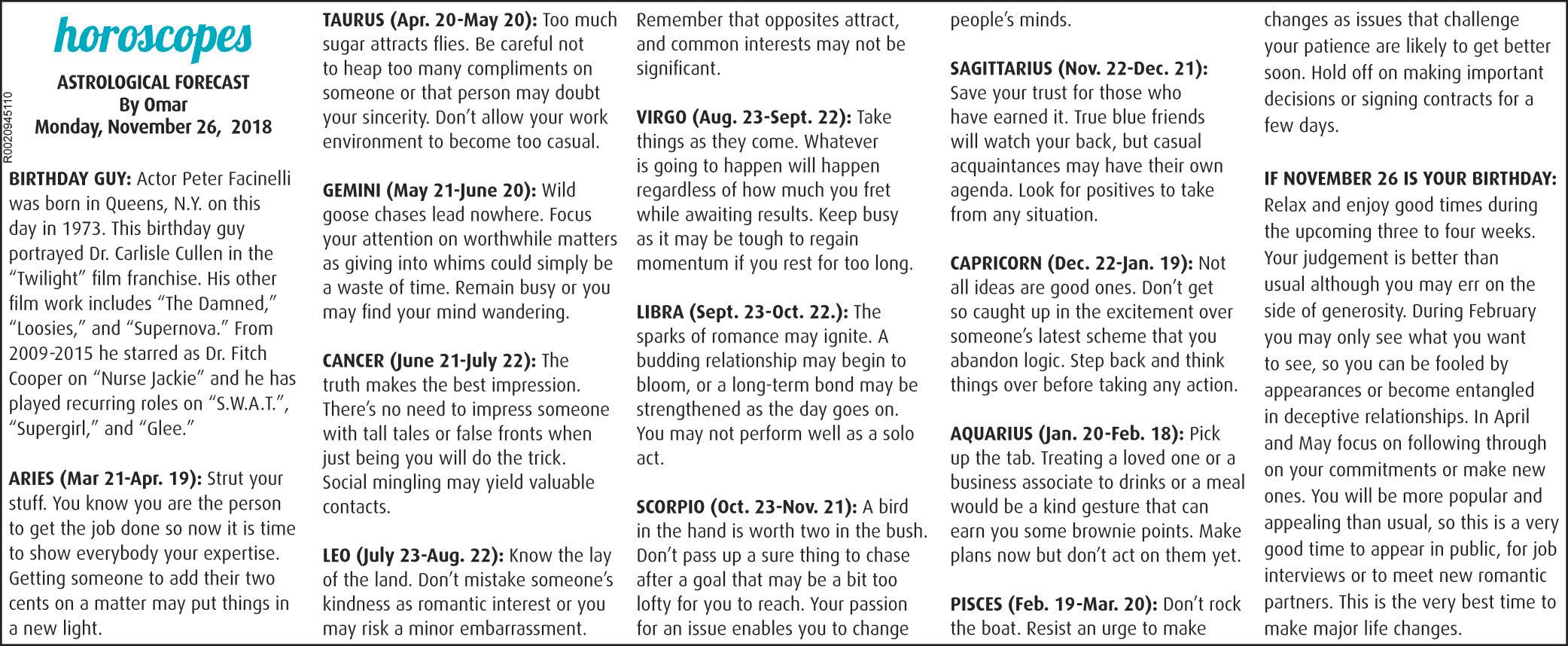


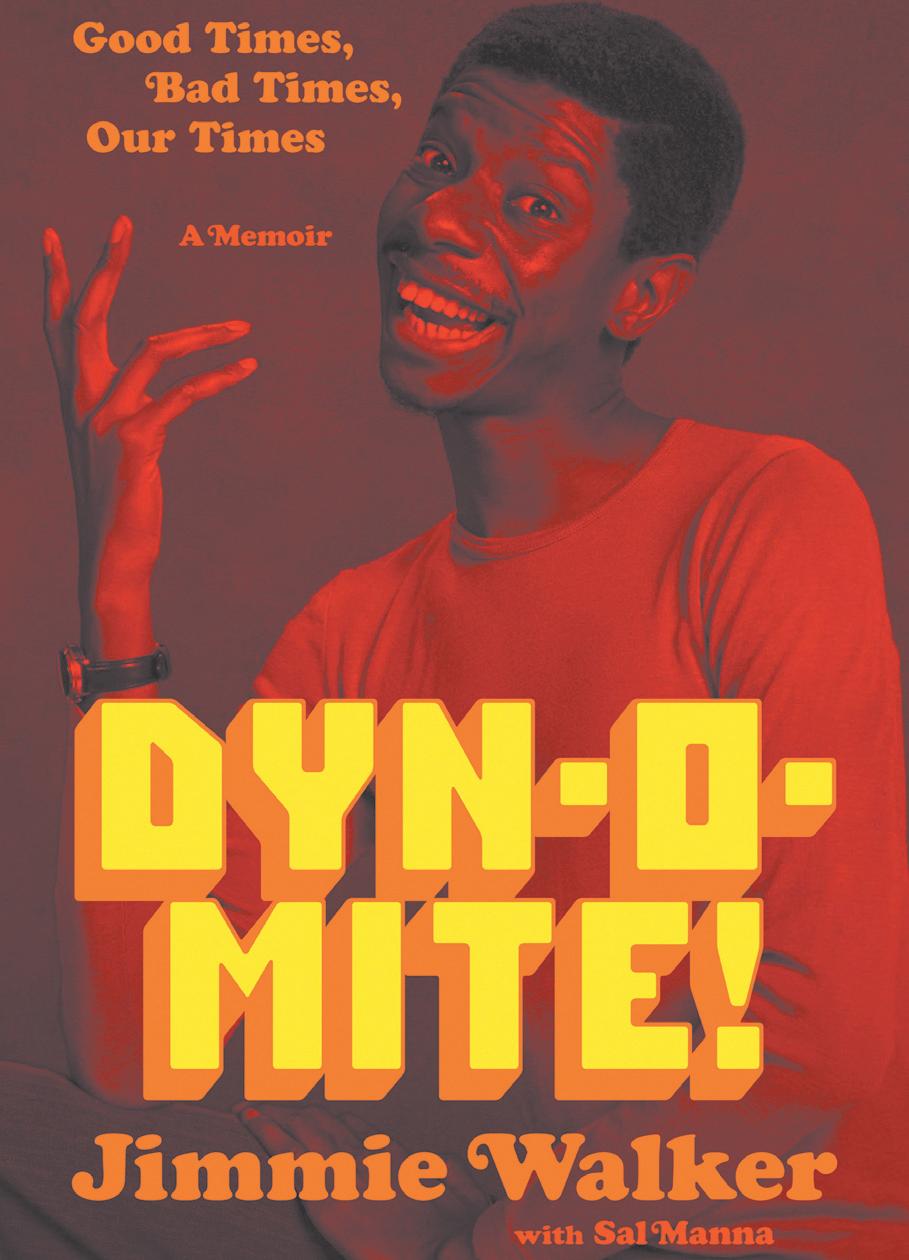
CITIZEN NEWS SERVICE PHOTO
This cover image Dyn-O-Mite!: Good Times, Bad
NEW YORK — There’s no nostalgia quite like TV nostalgia, for just the right binge-watcher or old-time fanatic, at least.
A few ideas for retro TV gifts pegged to hit shows through the decades:
Search around for vintage doll sets of favourite characters in original packaging, autographed photos and framed studio stills with show stats. Head to eBay, Amazon or other sites and shops that deal in collectibles.
Otherwise, go for chuckles with a mousepad or T-shirt emblazoned with The International Order of Loyal Raccoons or an Alice Kramden is my role model mug or onesie, for the next generation.
A particular favourite on Rebubble.com: A nicely done graphite pencil drawing of Ed Norton doing the Hucklebuck on hoodies and T-shirts. $25.52.
We’re talking the original series. These collectibles are plentiful. Know what you’re doing and how much you should be paying for this stuff.
There are tons of Star Trek gift items all over the place, including an oven mitt with the split fingers of the Vulcan peace and prosperity greeting on Thinkgeek.com, for $9.99. Shirts abound on CBSstore.com including a retro look for women in a yellow crew with original characters. $24.99.
The shop at startrek.com put the Delta on a 16-ounce wine glass for $9.99 and offers a USS Enterprise bottle opener for $14.95, cause those get lost. Gift an ugly sweater that reads: Trek the Halls. $64.99.
How about a set of Vulcan earbuds, complete with pointy ears, from Anovos? $35.
Pick up a Dyn-O-Mite! T-shirt. Cafe Press even has one in white for dogs. $19.95.
The actor-comedian who played J.J. Evans, Jimmie Walker, made that word his signature. He wrote a memoir with Sal Manna, Dyn-O-Mite! Good Times, Bad Times, Our Times. The book details Walker’s violent and abusive upbringing in the Bronx, his rise as a standup comedian and tensions on the set of this hit CBS program. Dig around for the best copy or look for digital or audio versions to gift.
Got a Janet Jackson fan who appreciates her time on the show as Penny Gordon Woods? Pick up something special on Jackson’s official website. It’s full of State of the World Tour and Rhythm Nation merch. How about a black, vanilla-scented Janet candle in a gifty black box? $24.95 at Janetjackson.com.
The gals, especially Betty White, are having a prolonged moment.
There are Golden Girls branded Monopoly , Trivial Pursuit and Clue board games because, why not. There’s a Sophia “action” figure, fleece throws and Pez dispensers of the entire gang. Not good enough? How about a backpack with the cast of the NBC hit on it, a Shady Pines retirement home mug or Rose socks? Still not just right? Search Amazon for a pink sweatshirt with Blanche, Rose, Sophia and Dorothy heads that reads: Squad Goals. Fans with cars might enjoy the Golden Girls car windshield sun shade with true-to-life likenesses of the ladies that might prompt a few turned heads from passers-by. Available at Toynk.com for $29.99. That site also sells a set of four colourful shot glasses, one Golden Girl per glass. $19.99. And thanks to a company called Funko, which makes licensed pop culture collectibles, the holy grail of Golden Girl “it” items is a purple-hued, Cheerioshaped cereal with a toy figure inside. It was so hot that private sellers are now asking up to nearly $85 a box.
This year is the 50th anniversary of the first airing of the iconic PBS show back in 1968. With the addition of a recent documentary, Fred Rogers is top of mind for fans. The PBS online store is ready. There’s a fabulous mug adorned with favourite quotes and song lyrics and the man himself. When you add hot water, his attire changes from his business suit to his cardigan. $13.99.
There’s a colourful wood replica of the show’s famous Neighborhood Trolley for $59.99, an array of socks emblazoned with his visage, T-shirts, a magnetic dress-up set, notecards, sticky notes with inspirational quotes and even a branded bar of soap that runs $3.99.
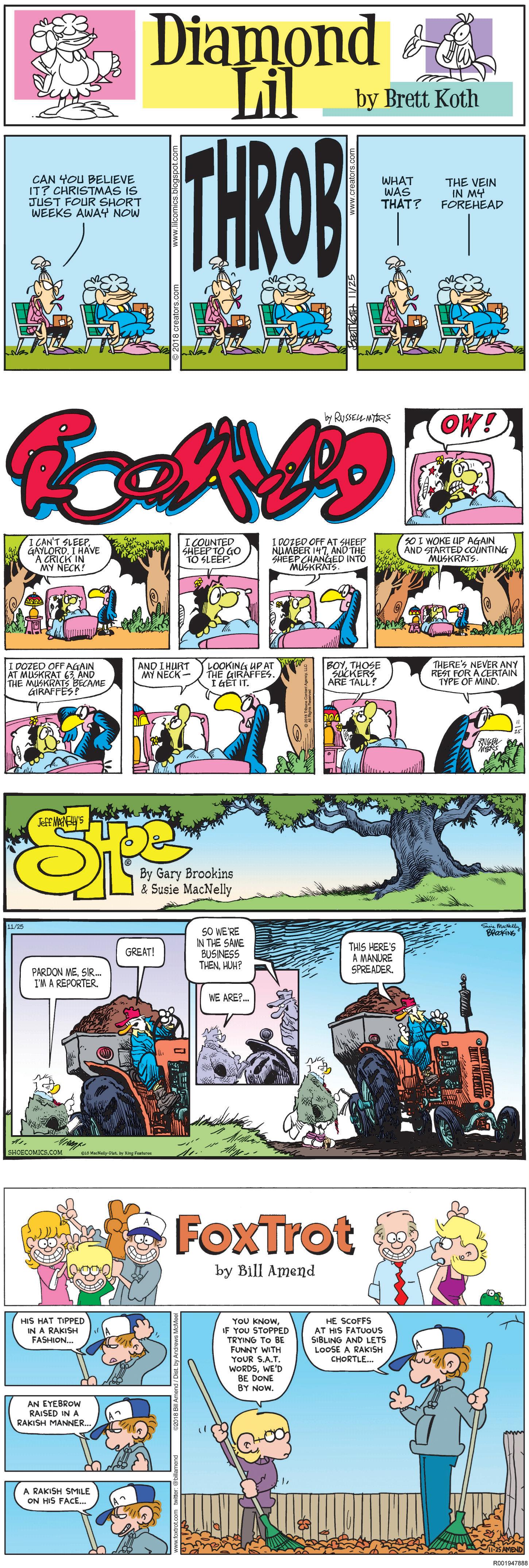


A look
NEW YORK — Behind every great book are the books which influenced it.
The “micro-learning” app and platform blinkist. com has been compiling literary sources for such classics as A Clockwork Orange, Oliver Twist and 1984. Mary Shelley’s Frankenstein was inspired by each of her parents – William Godwin’s An Enquiry Concerning Political Justice and Mary Wollstonecraft’s A Vindication of the Rights of Women.
One of the defining novels of the Civil War era, Harriet Beecher Stowe’s Uncle Tom’s Cabin, drew in part upon one of the defining memoirs, The Narrative of the Life of Frederick Douglass, an American Slave. Douglass’ book, which remains standard reading in many schools, also was cited by Toni Morrison for her Pulitzer Prize winning historical novel Beloved. “We were noticing the attention around the 200th anniversary of Frankenstein and got to thinking about the nonfiction works which help author of fiction,” says Blinkist writer-editor Tom Anderson. “We think of those books as the unsung heroes.” Charles Dickens’ portrait of extreme wealth and poverty in London in Oliver Twist was in part modeled on Edward Gibbon’s The History of the Decline and Fall of the Roman Empire. Anthony Burgess drew upon fiction and nonfiction for his terrifying A Clockwork Orange, his sources including Aldous Huxley’s futuristic classic Brave New World and B.F. Skinner’s landmark of psychology Science and Human Behavior.
Tolstoy’s War and Peace reflected the author’s reading of the philosophy of Arthur Schopenhauer, along with works about Napoleon and French history. According to Tolstoy scholar Ani Kokobobo, the author was “captivated” by Schopenhauer and his belief that “death is the only reality,” a viewpoint expressed by the cerebral Prince Andrei Nikolayevich Bolkonsky in War and Peace. Kokobobo also noted that War and Peace was a response in part to such French scholarship as Adolphe Thiers’ History of the Consulate and the Empire of France Under Napoleon, which Tolstoy believed exaggerated Napoleon’s stature and military ideas.
“Tolstoy did not believe in this ‘great man’ theory, also propagated by Thomas Carlyle, and thought that victory and defeat were not determined by a sole heroic leader, but rather by the collective alignment of the will of thousands,” said Kokobobo, editor of the Tolstoy Studies Journal.
George Orwell’s 1984, the Dystopian political novel which has become a bestseller again during the Trump administration, reflects in part the British author’s reading of two nonfiction studies: James Burnham’s The Managerial Revolution and Halford Mackinder’s Democratic Ideals and Reality: A Study in the Politics of Reconstruction.
In a recent telephone interview, Orwell’s son, Richard Blair, said his father was “the most voracious reader” who “absorbed enormous amounts of books.” Orwell Society committee member Les Hurst said that “1984” shows how Orwell adapted the ideas of others to his own. He noted a passage from the Mackinder book, which came out just after World War I: “Who rules East Europe commands the Heartland; who rules the Heartland commands the World-Island; who rules the World-Island commands the world.” Orwell borrowed Mackinder’s framing for one of the most famous epigrams from 1984: “Who controls the past controls the future. Who controls the present controls the past.”
“The Mackinder book sat in Orwell’s mind for several years,” Hurst said. “Orwell was able to translate those words, able to extend Burnham’s concepts of power and power worship and to take ideals of geopolitics and perform this great imaginative leap, from geography and cast into the past and into the future. He takes something with two dimensions and turned it into something that is three dimensional.”
How the Grinch Stole Christmas is presented by the Nove Voce choir on Saturday, Dec. 1 at 10 a.m., 11 a.m., noon, 1:30 p.m., and 2:30 p.m., at the P.G. Civic Centre, Room 208, 808 Canada Games Way. Richard Bjarnason will be joining Nove Voce to read the original Grinch story as the choir performs songs from the cartoon and movie. Great music will be performed based on the Dr. Seuss cartoon and even the group’s own dog Max.
Enjoy favourite Grinch songs like You’re a Mean One Mister Grinch, Where Are You Christmas and Welcome Christmas.
All tickets are $5 at the door, cash only, arrive early to avoid disappointment.
There’s a great
Roy HARRIS Citizen news service
It’s no surprise that central European river cruises are booming. Gliding along the Danube or the Elbe through the countryside, perhaps topside with a glass of wine, is a lovely image. But my wife Eileen and I instead chose a “road cruise” from Budapest to Vienna to Prague last September.
And we’re glad we did.
Mulling the pros and cons of river and road touring before making our plans, we noted that the per-diem costs are roughly similar for each form of travel, depending on the amenities offered. On a riverboat there’s no unpacking and repacking, and many meals are prepared by galley chefs who become familiar with travelers’ preferences. Boats tend to stop at smaller river towns, too, which aren’t on most land-based itineraries.
For our vacation, though, we had targeted the Hungarian, Austrian and Czech capitals specifically: joined in history, but each with its own particular cultural wonders and political twists. Curious about how leaders of all three nations had moved closer to Russia lately – a quarter-century after the Soviet Union fell, to end Russia’s stranglehold on both Hungary and the former Czechoslovakia – we even hoped to gather some understanding of the shifting political winds there.
Slowly churning the Danube between Budapest and Vienna would steal time from our city explorations, we knew, and the thought of a small stateroom didn’t charm us, either. We liked that our Wilton, Connecticut-based tour company, Tauck (which offers both river and road trips) had booked elegant, centrally located hotels for its eight-day Week in Imperial Europe tour.
“I don’t think of it as better or worse when I compare road and river touring,” says Tauck spokesman Tom Armstrong. “Each has its strong points; each its limitations.”
Buses can take groups more places, but that promise of effortless one-time packing remains a huge draw for many customers. As for our plan to get a deeper experience of the cities, and a feel for politics there, though, Armstrong agreed that the road trip probably was the right choice.
After flying into Budapest’s Liszt International Airport we headed to the Kempinski Hotel to meet our Tauck tour director Lurdes Cambronero. During our very first group venture – smack in the middle of the larger, more populous Pest side of the city – we quickly became fans of the compact, comfortable motor coach that also would serve as our intercity transportation. It took our group of 24 west across the Danube, and up to the 13th-century castle atop the city’s Buda side. At dinner in a nearby restaurant’s private room, the new traveling companions introduced themselves and were led on a walk giving us closer views of the castle, the Royal Palace and a dramatic lookout post called Fisherman’s Bastion: the three structures that dominate the western skyline from Pest. Lurdes was joined by a local guide, Vincent. A business student who conducts tours on the side, he mentioned in passing the country’s current flat economy, and his own plans to find work in Germany instead. When I asked what he thought of Hungary’s pro-Russian prime minister, Viktor Orban, Vincent demurred – but offered his view that Budapest’s voters tend to be outnumbered these days by a rural populace that shares Orban’s fear of immigrants, doubts about the European Union and admiration for Russian President Vladimir Putin.
Monday’s explorations began at the glorious 1884 opera house, where we got a taste of the city’s deep sense of competition with Vienna. The Austrian capital was the seat of the Austro-Hungarian Empire that ended with the First World War, and Budapest its oft-snubbed “second city.” Our opera-house guide noted that Emperor Franz Josef had ordered that the new Hungarian hall be built slightly smaller than Vienna’s. Yet proud Hungarians still feel their building outshines Vienna’s. (In a few days we’d have a chance to put that to the test.)
One stop that first day was the enormous Byzantine-Moorish-style Dohany Street Synagogue. Somehow, it had survived the Nazis in the Second World War, perhaps because its high spire doubled as a radio tower. In its courtyard stood a glittering metallic tree, the centerpiece of a moving Holocaust memorial. Each leaf bore the name of one of the many thousands murdered when the Nazis exterminated entire Hungarian Jewish communities in the 1930s and 1940s. It would not be the last such stark memorial we would see on our tour.
Tauck’s guides also provided a diverse sense of modern-day Budapest, including


map of the
a Monday late-night visit to some “ruin bars” – established by local entrepreneurs to transform decrepit prewar buildings into colourful, jazzy watering holes.
Tuesday morning it was strudel-making in a bakery shop. Our group’s average age was close to 60, but one younger couple from Wisconsin had brought their son Paul, an enthusiastic 13-year-old who was picked to help roll out a table-long expanse of dough, and, of course, to delight in the sweet finished product.
Tuesday afternoon was a three-hour bus ride to Vienna – a full day’s trip by boat on the Danube – and soon we were settling in at the city’s Hotel Imperial.
Our first two evenings resonated with Viennese music, a particular draw for Eileen and me. At a small chamber concert held in an ornate hall where Mozart himself had played, the conductor invited young Paul up, to play the triangle during a Strauss polka. His performance was flawless. The next night included a group waltz lesson.
another concert. And it was then we learned that a hotel can contribute more than spacious rooms and city-centre proximity to a trip. Asking the Imperial’s concierge to try scoring Vienna Opera House seats – a long shot because Thursday was the sold-out season opener – we were amazed when he managed to find us two returned tickets.
Georges Bizet’s dazzling Carmen, which we saw from the boxes nearest the stage, made for a once-ina-lifetime musical experience. (As for a Vienna-Budapest opera-hall comparison, we rated Vienna’s the equal of Budapest’s, but no more glorious.)
The Czech capital’s original architecture is quite well preserved, as it was spared nearly all Second World War bombing, giving it an unreconstructed antiquity that our two previous stops lacked.
Guided visits to Vienna’s legendary palaces were a mainstay of our 2 1/2 days there. Schönbrunn Palace, the gilded home to the Habsburg dynasty, overwhelmed us with its beauty and history – both imperial and more-recent. (In 1961 U.S. President John Kennedy and Russia’s Nikita Khrushchev had a fascinating encounter in its ornate Great Gallery.) And the Belvedere Palace and Museum exposed us to a diverse sampling of works tracing the development of modern Austrian painter Gustav Klimt (1862-1918), including The Kiss, an iconic piece from his so-called Gold Period. But Vienna had whetted our taste for
On Friday we motored to Prague, a city whose own Vltava River (called the Moldau in German) isn’t directly connected with the Danube or the Elbe. For that reason, even popular cruises on those two larger rivers tend to serve Prague overland, rather than by boat, as a popular “add-on” river-tour option. Prague, in many ways, seemed the perfect complement to Budapest and Vienna. The Czech capital’s original architecture is quite well preserved, as it was spared nearly all Second World War bombing, giving it an unreconstructed antiquity that our two previous stops lacked.
Friday evening started with a walk from our base at the Augustine Hotel, a contemporary structure connected to a 13th-century monastery, located in the Lesser Town section of Prague. We crossed the statuelined 14th-century Charles Bridge into Old Town, home to its medieval Astronomical Clock, with figures of the apostles that parade at the changing the hour. In Old Town we found crowds of young Czechs enjoying
restaurants and bars into the late hours.
Similarities with Budapest and Vienna – cities that also once were part of the Austro-Hungarian Empire – commanded our attention, too. The Jewish populations of all three, of course, had been all but wiped or driven out during the Holocaust. And we were riveted when tour guides focused on that subject. In Prague, as in Budapest, a synagogue offered a horrific story. At what’s known as the New Old Synagogue in Old Town’s Jewish Quarter, we learned how the city’s entire Jewish population – more than 50,000 –was expelled starting in 1939. Most were first taken to the Theresienstadt work camp outside the city. A death camp generally came next.
Later, our bus took us high above Lesser Town to Prague Castle, where we watched the ceremonial changing of the castle guard. The guard, we learned, also was the personal guard for Czech President Milos Zeman, who maintains his office near the castle.
The city is attracting larger-than-usual tourist crowds this year, as it celebrates the 50th anniversary of the Prague Spring uprising – demonstrations by independentminded Czechs who were brutally put down by Soviet tanks. (The clash foreshadowed, two decades early, the fall of Russian-led communism in Europe.) We were drawn to Wenceslas Square, the broad public mall where the confrontation occurred. As in Hungary, Czech leaders have drawn much closer to Russia in recent years. Indeed, Zeman alienated many by snubbing the square’s official ceremonies, which he considered offensive to the Russians he admires.
After we returned home to the United States, I contacted two Tauck river-cruise passengers we had met by chance in a Vienna cafe. I was curious whether they’d been as pleased with the two-week riverboat vacation that took them from Amsterdam to Budapest by way of the Rhine, Main and Danube.
Both enjoyed their experiences overall. “It was easy-peasy – part of the reason we took this trip was so we wouldn’t have to unpack,” said Mariwyn Tinsley, a retired school administrator from Bremerton, Wash., and veteran of Tauck river and road tours. “We’ve long since given up needing to see everything.”
But Fred Meisenheimer, a retired energycompany executive from Dallas, lamented missing some city attractions: Buda Castle, for one. And even when the river-cruise passengers did make the rounds in a city, he said, the buses relied on “too much of what I call a windshield tour.”
So, might Eileen and I ever plan to see Europe by river in the future?
Maybe someday, we agree – but for now the packing and unpacking is fine with us if it means being able to explore our destination cities more thoroughly.

Get tips to improve your bottom line, every Friday with business coach Dave Fuller
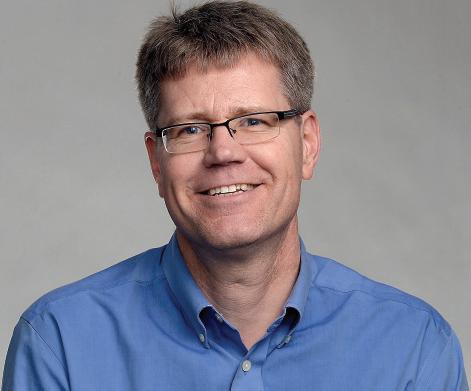
Geoffrey A. FOWLER
Special to The Citizen
Sure, you could choose a smart speaker based on sound or price. The go-to gadget gift of the season is available from Amazon, Apple and Google with better acoustics, new touch screens and deep holiday discounts.
But you’re not just buying a talking jukebox. Alexa, Siri and Google Assistant also want to adjust the thermostat, fill your picture frame or even microwave your popcorn. Each artificial intelligence assistant has its own ways of running a home. You’re choosing which tribe is yours.
I call it a tribe because each has a distinct culture – and demands loyalty. This decision will shape how you get information, what appliances you purchase, where you shop and how you protect your privacy. As many as one in 10 households plan to buy a smart speaker this year, according to the Consumer Technology Association. And Amazon says its Echo Dot is the best-selling speaker, ever.
The last time we had to choose a tech tribe like this was when smartphones arrived. Did you go iPhone, Android, or cling to a Blackberry? A decade later, it’s increasingly hard to fathom switching between iPhone and Android. (A recent Match.com survey found iPhone and Android people don’t even like dating one another.)
Now imagine how hard it will be to change when you’ve literally wired stuff into your walls.
In my test lab – I mean, living room – an Amazon Echo, Google Home and Apple HomePod sit side by side, and the voice AIs battle it out to run my home like genies in high-tech bottles. Here’s the shorthand I’ve learned: Alexa is for accessibility. Google Assistant is for brainpower. And Siri is for security.
Amazon’s aggressive expansion makes Alexa the one I recommend, and use, the most. Google’s Assistant is coming from behind, matching feature by feature – and Siri, the original voice assistant, feels held back by Apple’s focus on privacy and its software shortcomings.
Smart speakers are building the smart home that you never knew you needed. Inside the audio equipment, they’re home hub computers that work alongside smartphone apps to connect and control disparate devices and services. Now with a speaker and the right connected gizmo, you can walk into a room and turn on the lights without touching a button. Or control the TV without a remote. Amazon even sells an Alexaoperated microwave that cooks, tracks and reorders popcorn. But home assistants can also be Trojan horses for a specific set of devices and services that favour one company over another. My buddy Matt recently asked me to help him pick speakers and appliances for a big remodel. He loves the Google Assistant on his Android phone, so selecting his tribe should be easy, right? Hardly: He wanted to put Sonos speakers all around the house, but they take voice commands directly via Alexa. (Sonos says Google Assistant support is coming, though it’s been promising that for a year.)
Figuring out which connected doodads are compatible can be like solving a 10,000-piece puzzle. The best smart home gadgets (like Lutron Caseta and Philips Hue lights) work across all three tribes, but sometimes alliances and technical concerns make appliance makers take sides. Each AI has its limitations. They’re not all equally skilled at understanding accents – Southerners are misunderstood more


with Google and Midwesterners with Alexa. The price of ownership with some is letting a company surveil what goes on in your house. You can try, like me, to live with more than one, but you’re left with a patchwork that won’t win you any favours with family.
How do you find your AI tribe?
Here’s how I differentiate them.
Supported smart home devices:
Over 20,000.
Who loves it: Families who buy lots through Amazon and experiment with new gizmos.
The good: Alexa knows how to operate the most stuff, thanks to Amazon’s superior dealmaking.
The only connected things it can’t run in my house are the app-operated garage door and some facets of my TV. Amazon also has been successful at spawning new connected gadgets: Alexa’s voice and microphone are built into more than 100 non-Amazon devices. And Amazon recently announced plans to offer appliance makers a chip that lets Alexa users voice command inexpensive everyday things, from wall plugs to fans. Alexa has also mastered some of the little details of home life. It will confirm a request to turn off the lights without repeating your command – super helpful when someone nearby is napping.
The bad: Alexa grows smarter by the week, but it can be a stickler about using specific syntax. It also has the weakest relationship with
your phone, the most important piece of technology for most people today. Amazon has bolstered a companion Alexa app for phones, making it better for communicating and setting up smart home routines, but I still find it the most confusing of the lot.
Amazon doesn’t always show the highest concern for our privacy. This spring, when Alexa inadvertently recorded a family’s private conversations and sent it to a contact, Amazon’s response boiled down to ‘whoopsie.’ And it records and keeps every conversation you have with the AI - including every bag of popcorn it microwaves. (Amazon says it doesn’t use our queries to sell us stuff beyond making recommendations based on song and product searches).
Some love Alexa’s ability to order products by voice. But as long as Alexa runs your house, you’ll always be stuck buying those goods from Amazon. (That microwave will only ever order popcorn from Amazon.) The coming generation of appliances built with the Alexa chip inside could similarly trap you forever into Amazon-land.
Supported smart home devices: Over 10,000. Who loves it: People who are deep into Google’s services.
The good: Google Assistant comes the closest to having a conversation with an actual human helper. You don’t have to use
exact language to make things happen or get useful answers. Its intelligence can also be delightfully personal: It’s pretty good at differentiating the voices of family members. And on the new Home Hub device with a screen, Assistant curates a highlights-only show from your Google Photos collection.
While Android phone owners are more likely to use lots of Assistant-friendly Google services, the Assistant doesn’t particularly care what kind of phone you use – its simple companion apps work on iOS and Android. And Google is neck and neck with Alexa on many of the nuances: Night mode reduces the volume of answers at night, and it can even require Junior to say “pretty please.”
The bad: As a relative newcomer to the smart home, Google has been catching up fast. But in my house, it still can’t fully control my Ring doorbell or send music to my Sonos speakers. And I’m not convinced that Google has Amazon’s negotiating sway, or the influence to bring the next generation of connected things online.
The bigger problem is privacy. Google’s endgame is always getting you to spend more time with its services, so it can gather more data to target ads at you. Like Alexa, Google Assistant keeps a recording of all your queries –every time you ask it to turn off the lights. Google treats this kind of like your Web search history, and uses it to target ads else-
where. (Thankfully, It still keeps data from its Nest thermostat and home security division separate.)
The potential upside is that when Google discovers your habits in all that data, it might be able to better automate your home – like what time all the lights should be off.
Siri
Supported smart home devices: Hundreds. Who loves it: Privacy buffs and all-Apple households.
The good: Apple means business on security and privacy. Any device that wants to connect to HomeKit, its smart home software that works with Siri on the HomePod and iPhone, requires special encryption.
What’s more, your data is not attached to a personal profile, which aside from protecting your privacy also means that Apple is not using your home activity to sell or advertise things. (While other smart speakers keep recordings and transcriptions of what you say, Siri controls devices by making a request to its system through a random identifier, which cannot be tied to specific user.)
And Apple is pretty good at keeping the smart home simple. Setting up a smart home device is mostly just scanning a special code. Even creating routines, in which multiple accessories work in combination with a single command, is easier in the Siri’s companion Home app than with competitors.
The bad: You have to live in an all-Apple device world to reap these benefits. Siri’s a pretty good DJ, but only if you subscribe to Apple Music. You’re stuck with the HomePod as the one-size-fits-all smart speaker, and Siri still isn’t as competent as her AI competitors.
And Apple’s security-first approach has kept too many appliance makers from joining its ecosystem. Sure, it’s quality not quantity, but Siri still can’t interact with my Nest thermostat or Ring doorbell, just to name two. Apple did recently loosen up a tad: starting with Belkin Wemo’s Mini Smart Plug and Dimmer, it no longer requires special hardware for authentication – that can now happen via software.
The move should make it simpler to make new products Siri compatible, and allow it access to existing ones.






PRICE,DAVIDW. MARCH5,1982NOVEMBER23,2008 Inmemoryofa beautifulpersonDave (Duck)Price.Itwas10 yearsonNovember 23rdthatyoupassed awayatPGHospice fromcancer.Your family&friendsstill talkaboutyouoften, rememberingallthe greatmemories.You willneverbeforgotten. LovedstillbyUncle Richard,AuntyLinda, Adam,Matt,Lisa; yourMom,Julie; GrandparentsBill& HelmyPrice&yourdog Yogi.
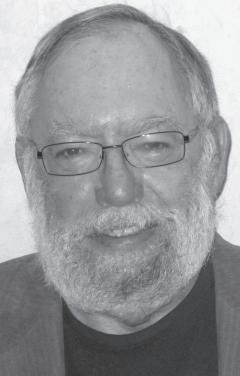
Bowman, Victor Frank, Born October 16, 1939 passed away peacefully after a very brief stay at Rotary Hospice House on November 13, 2018. Vic was a longtime member and past President of the Prince George Rotary Club, Past President and director of the Prince George Chamber of Commerce, Past Chair and board member of the Prince George, Northern BC & BC Construction Associations.
Vic is survived by his three sons Kevin (April), Ward (Diana), Bryan (Janice), Nephew Chris (Darlene), Sister Marion Perison, Mother-in-law Mary Westlake, Brothers-in-law Ray Westlake (Lois), Doug Westlake (Jetta), Grandchildren Jessica (Rob), Nickolas (Aisha), Oliver, Hamish, Ewan, Norah & Jordys, Great Grandchildren Tiani, Mckinley and Paisley, many nieces, nephews, cousins and close friends. Vic was predeceased by his wife Lenore, parents Bill and Mabel, brother Andy and father-in-law Ralph Westlake. There will be no funeral service by request. There will be a Celebration of Life at the Prince George Golf and Curling Club Friday, November 30th from 1:00 to 3:00 PM. Thank you to the Northern Health Home Support team and to all the staff at Hospice House. And a very special thank you to Dr.’s Knoll, Butow and especially Dr. Boucher for her superior care and kindness. Donations in lieu of flowers to Rotary Hospice House or to the charity of your choice.

Stanley Peter Aksenchuk September 19, 1940November 16, 2018
After sudden complications following surgery in Kelowna on November 8th, Stan made his final journey home to be with the Lord. Stans’ wife and nephew (Gene) were by his side. Stan is survived by his wife, Marlene, sons, Darren and David, stepsons, Trevor and Matthew, daughter-in-laws, Alex and Tania, grandchildren Chanel, Hannah, and Aedan, plus many nephews and nieces. Brothers, Walter (Mary), Joe (Rose), Lawrence (Diane), and sister, Lucy, live in Edmonton and prayed continually for Stan as they were unable to be present. Working in his real estate and appraisal businesses were a passion. It was a challenge for him to finally retire at the age of 76. He enjoyed an Alaskan cruise, a trip to Cuba, plus several smaller vacations by car post retirement.
Stan loved his sports and spent his years playing baseball, hockey, and golf. He often went to watch the Cougars and the Spruce Kings when they played in town. Summers were spent fishing, boating, canoeing, camping and sitting around the fire pit with a group of friends (a favourite pastime). Friday nights were celebrated almost ritually socializing with friends at a local meeting place and closing out the evening at the casino. He definitely lived life to the fullest. An obituary can never begin to truly describe Stan’s many wonderful attributes and innumerable accomplishments in life. He will be deeply missed and fondly remembered by all those who were blessed to have him in their life. Date to be determined for his Celebration of Life.
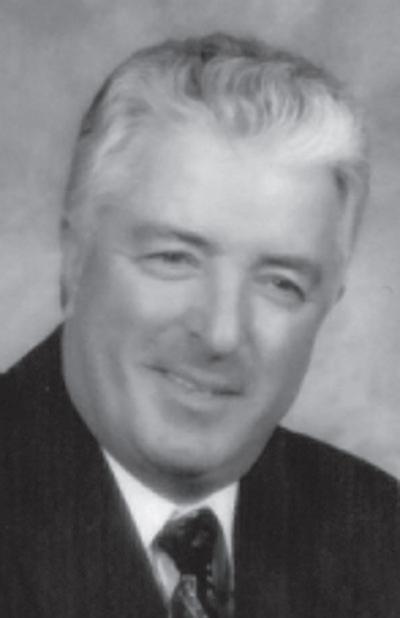

MANUEL MELO
BOTELHO
October 15, 1938November 19, 2018
It is with great sadness and a devastating sense of loss that we share the passing of our beloved dad, husband and grandfather. His love of family, quick wit, twinkling smile and love of storytelling will live in our hearts forever. Manuel is survived by his wife of 52 years Luisa, sister Maria (Luis), son Gil (Tasha), daughter Gina and his beloved grandchildren, Johnathan, Matthew and Isabella as well as nieces and nephews. He was predeceased by his parents Joao and Beatriz and brother-in-law Luis. Manuel was born in Agua Retorta on the island of Sao Miguel and immigrated to Canada in 1968. He worked for Northwood until his retirement in 1998. He spent his retirement In his garden, his shed and wine cellar, but mostly with his beloved grandchildren. Our family would like to thank everyone for their support including the staff at UHNBC and Hospice as well Dr. Bartell and Dr. Mader. A prayer service for Manuel will be held on Sunday, November 25th, 2018 at 7:00 pm at Sacred Heart Cathedral with the Funeral Mass on Monday November 26th at 10:00am at Sacred Heart Cathedral.
Deus Lhe Deia o Eterno Descanco
In lieu of flowers, please make a donation to BC Cancer Society. Assman’s Funeral Chapel in care of arrangements.

We sadly announce the tragic and sudden passing of Wesley Stephen Walker (Steve) on November 17, 2018. Steve was born in Surrey and moved to Prince George where he graduated from PGSS in 1977. He soon joined the family business and found joy and happiness working along side family. He became a partner and was very proud to be a part of something built by his father and Uncle Art, as his dad was his mentor and his best friend. Steve was a hard worker and everything he did was always done the right way. He loved his latenight hockey games and golf games with the guys. Steve was loved and will be missed by his parents, Wesley and Audrey Walker. He is also missed by his devoted wife Wendy Taylor. Steve also leaves behind his half sister Mary, sisters Christine, and Jana (Ken Robertson), as well as his brother Todd (Terri). He will be missed by his mother-inlaw Elaine, brothers-in-law Ken (Belinda) and Robert Taylor. Also, Nieces Amanda Cowan, Lyndsay (Ryan Gallo), Phaedra and Tori Robertson and Robyn Raby (Ryan). Nephews Kyle, Ryan and Joey Taylor. In addition, he leaves his great nephews, many uncles, aunts, cousins, extended family and friends who will miss him and remember how wonderfully kind he was to all he came in contact with. Please join the family at Assman’s Funeral Chapel at 11am on December 1, 2018 and say your goodbye, requesting no young children at service. Burial at PG Cemetary to follow. The family asks that in lieu of flowers please consider giving to the Scholarship Bursary to be set up in Steves memory at BMO on Central Street - details to follow.
BUSINESS OPPORTUNITY
Established Franchise Tax Preparation BusinessMackenzieservicing and McLeod Lake area for over 30 years.
Gross Revenues of $85,000 to $90,000 Annually and Potential to expand revenues in a growing economy. Transition support available for the right buyer. Serious Inquires Only


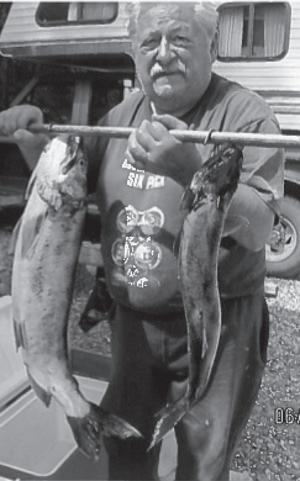
Hirschhofer, Karl Heinz (“Shortpants”) Sept 24, 1949 to Sept 30, 2018
It is with very heavy hearts that the family of Karl Heinz Hirchhofer is informing his friends, family and numerous acquaintances of his sudden passing on September 30,2018. By Karl’s side when this stubborn German fought for his last breath, was his loving and devoted wife of 47 years, Marnie. Karl and Marnie together raised four children, Troy Hirschhofer, Keith Hirschhofer, Natasha (Blaine) Buchi and Ashley (Doug) Adams. Also blessed with four grandson’s Kyle, Brayden, Parker and Kelly. Karl embraced retirement and spent his time making wine, fishing, making sausage/jerky, having a cold beer at the Quesnel brewery and taking his trusty dog Ricky to A&W to share a burger. Karl is tremendously missed by his family and will forever be remembered for his quick wit, gift of the gab, eye for detail, love for his family and the great outdoors. No service by request. Celebration of Life spring of 2019
